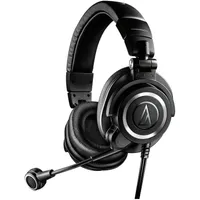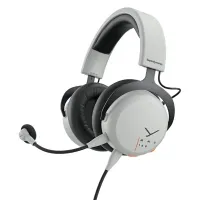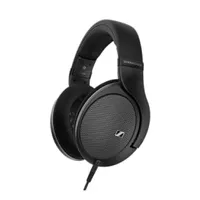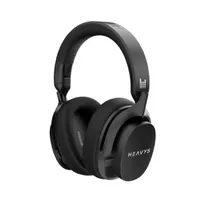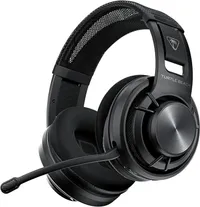The best audiophile headphones for gaming in 2025: my top recommendations for the best cans money can buy
Immerse yourself in your games with the best audiophile headphones for gaming.
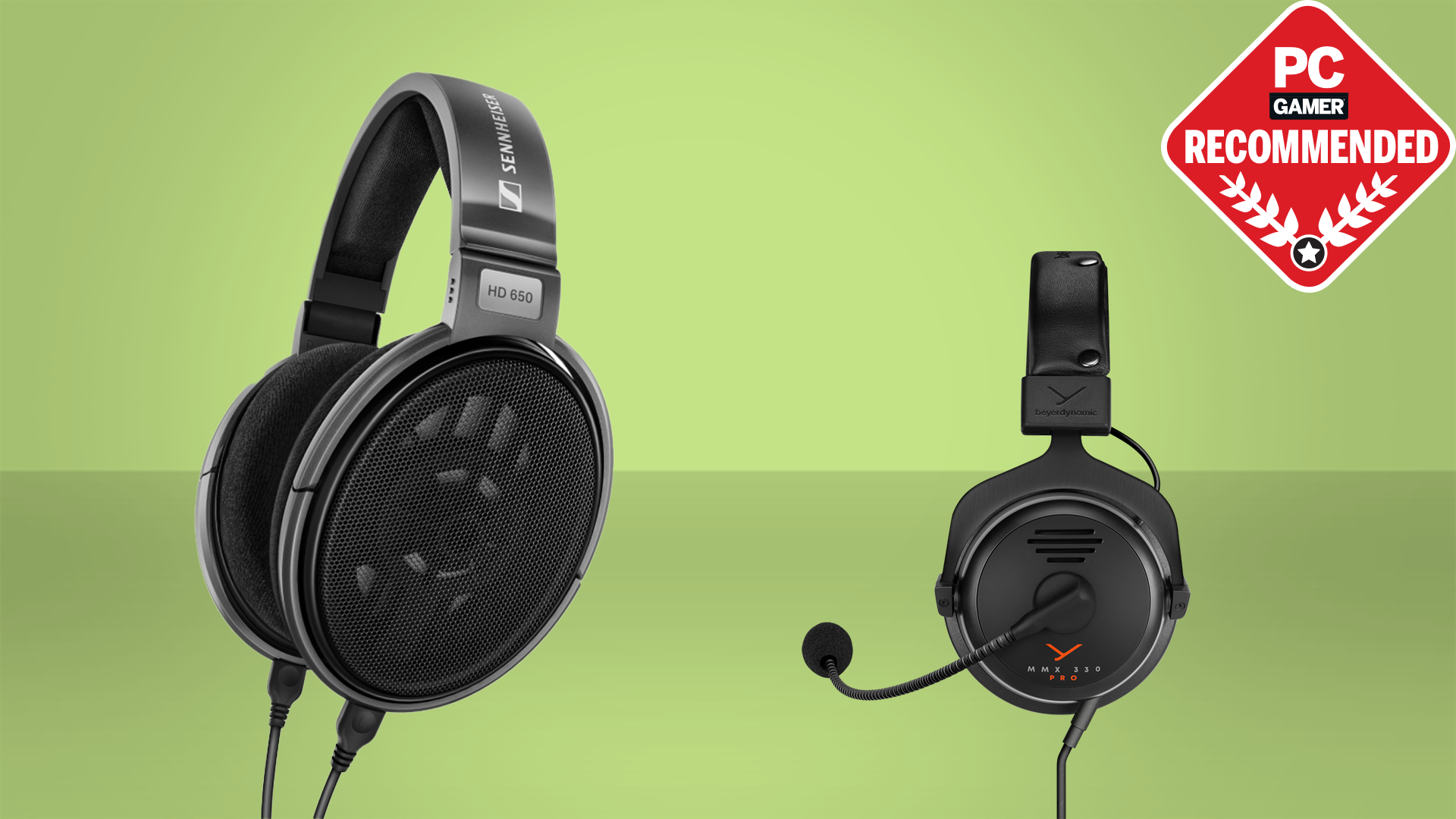
The best audiophile headphones for gaming are excellent for immersive gameplay. You might think it's overkill to use high-end headphones for gaming, but they can transform your experience. They can simply make your games sound so much better than a cheap headset ever can.
In our learned opinions, the best audiophile headphones for gaming are currently the Beyerdynamic MMX 330 Pro. These marvels of audio engineering offer simply stellar sound quality and comfort, with rock-solid build quality and a name that simply can't be argued with. However, if you're looking for the best budget audiophile headphones, the Drop + Epos 38 PC38X are an affordable set of cans with fantastic audio quality and an easy-to-use microphone to boot.
The audiophile rabbit hole is all too easy to fall down when you start chasing a sound that can't be caught, but can you really put a price on total audio immersion? No. And yet, we've tested and ranked the headsets below with pricing in mind, so you can better understand which will suit your audiophilic needs.
The quick list
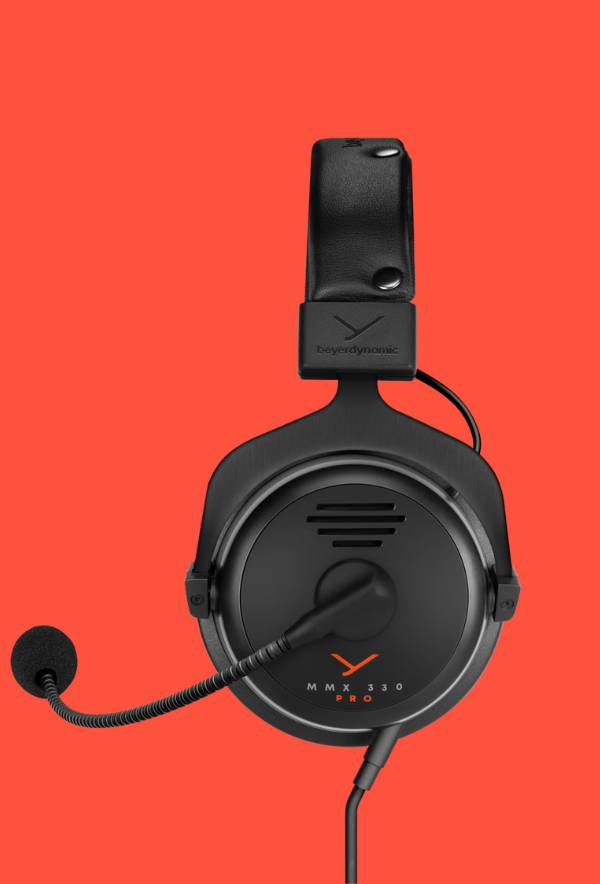
Best overall
With incredible audio performance and supreme comfort, the Beyerdynamic MMX 330 Pro represents just about the best audiophile gaming experience you can buy right now, all wrapped up in a handsome frame. Those drivers are a classic in studios the world over, and perfect for your games too.
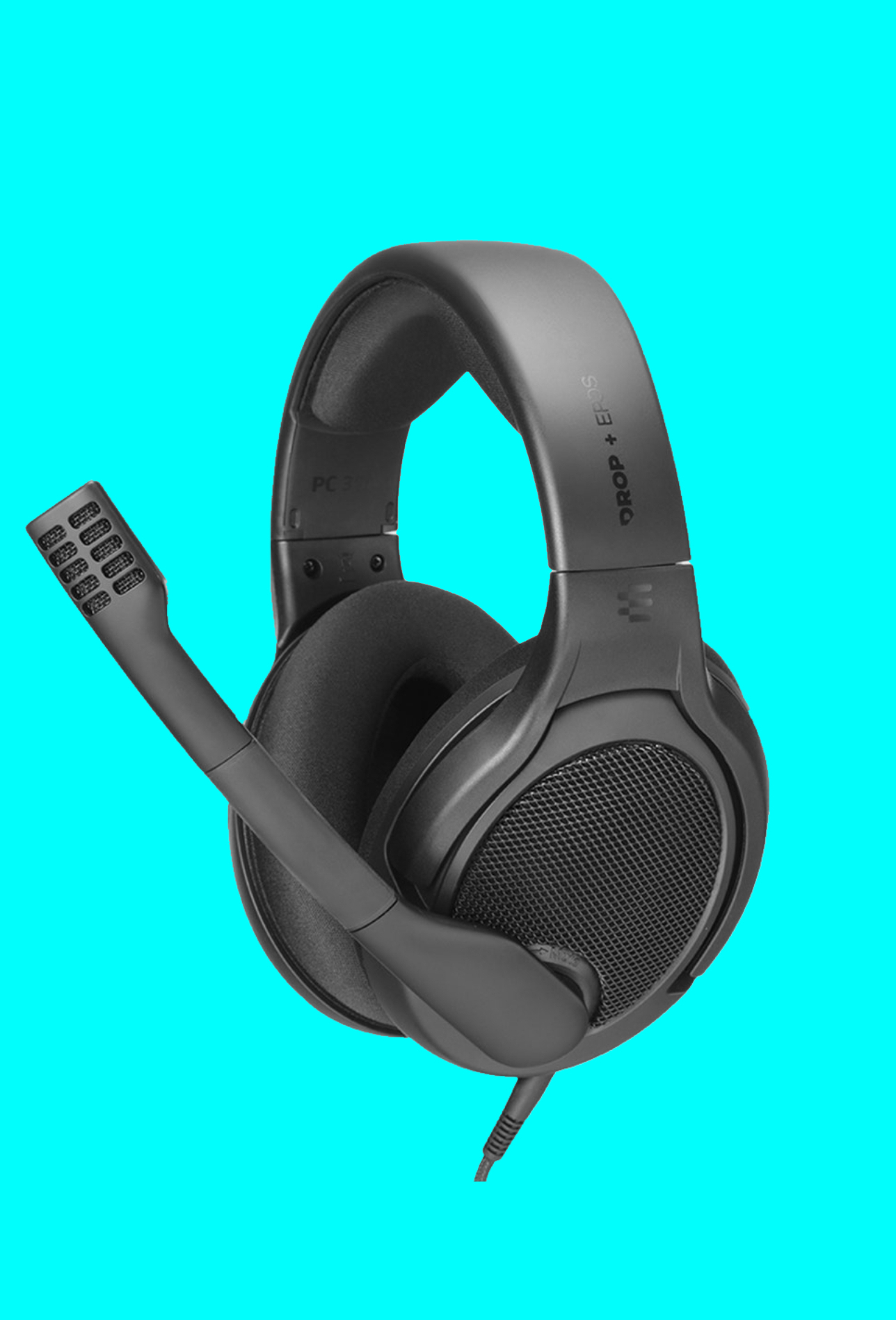
Best budget
Brilliant audio quality and excellent depth combined with a high-performing and easy-to-use microphone means this Drop/Sennheiser collaboration is a great pick for the audiophile on a budget. It's lightweight, comfortable, and a great affordable choice.
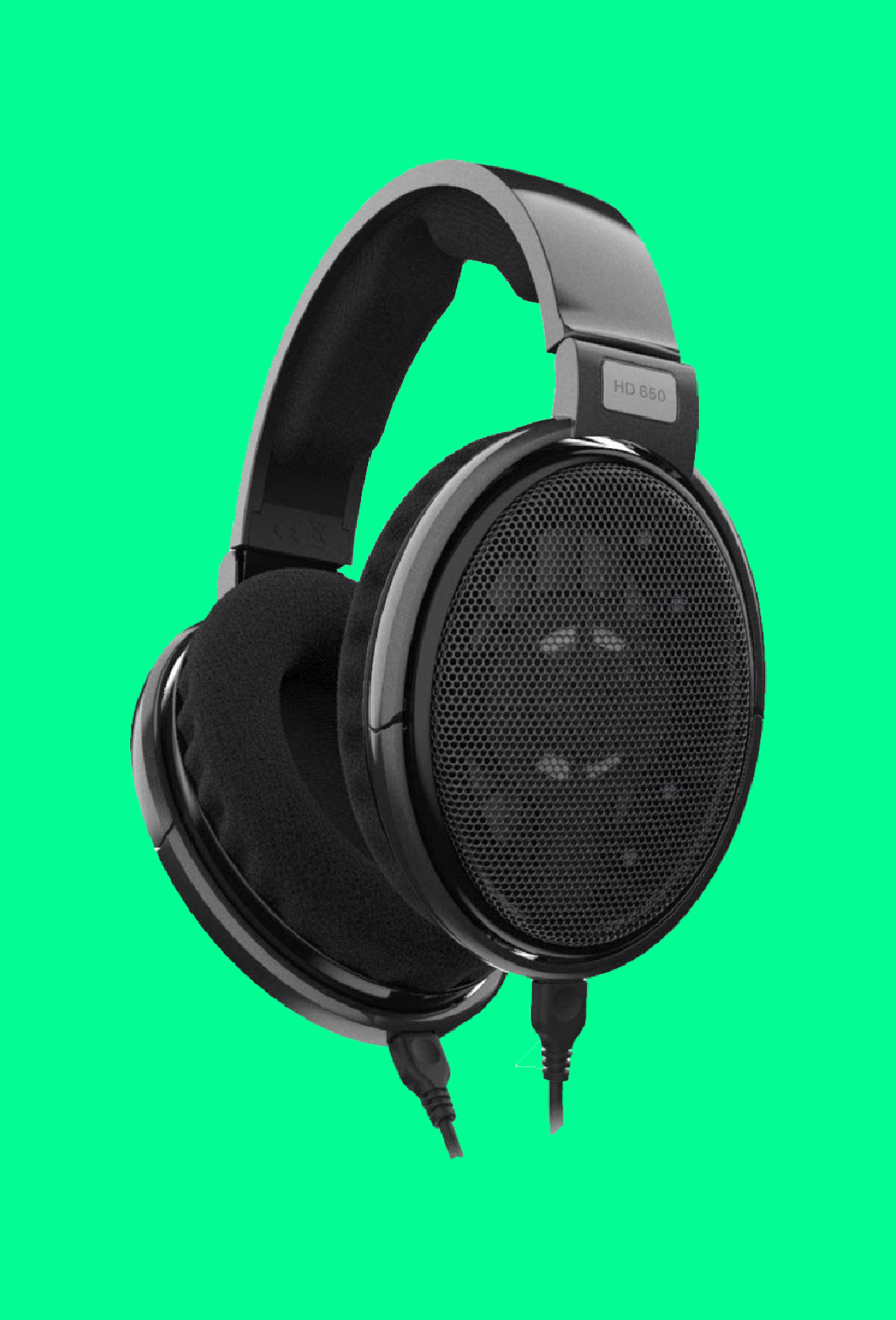
Best mid-range
Highly detailed drivers, spotless audio quality, and a massively wide soundstage. Need we say anymore? Well, it's well built, comfy, and comes from one of the most recognizable brands in high-quality audio. That'll do.
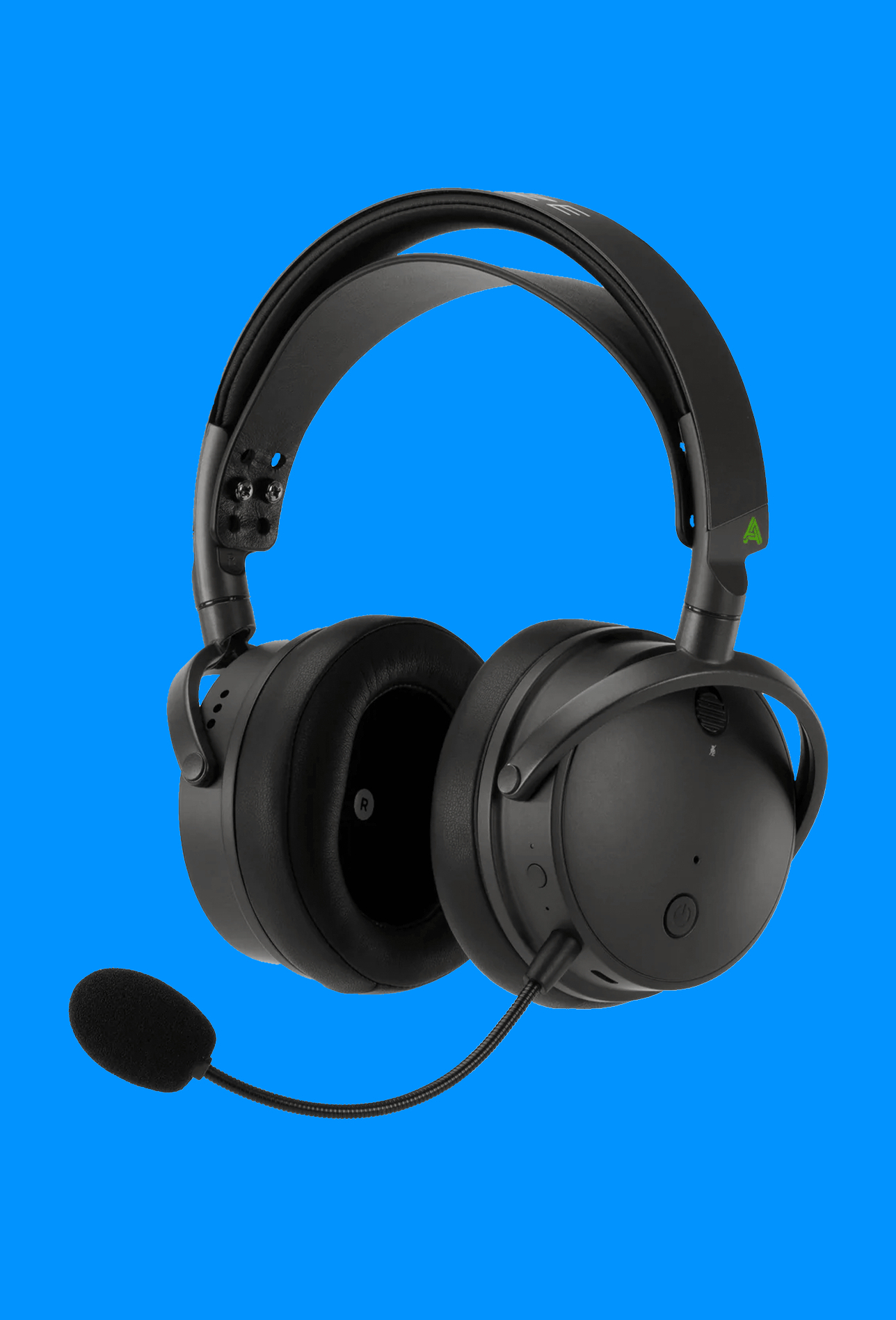
Best wireless
Audiophile headphones and wireless are not traditionally good bedfellows. The Audeze Maxwell is here to buck that trend, however, with its staggeringly good planar magnetic drivers. It might be big and heavy, but its audio chops are exceptional.
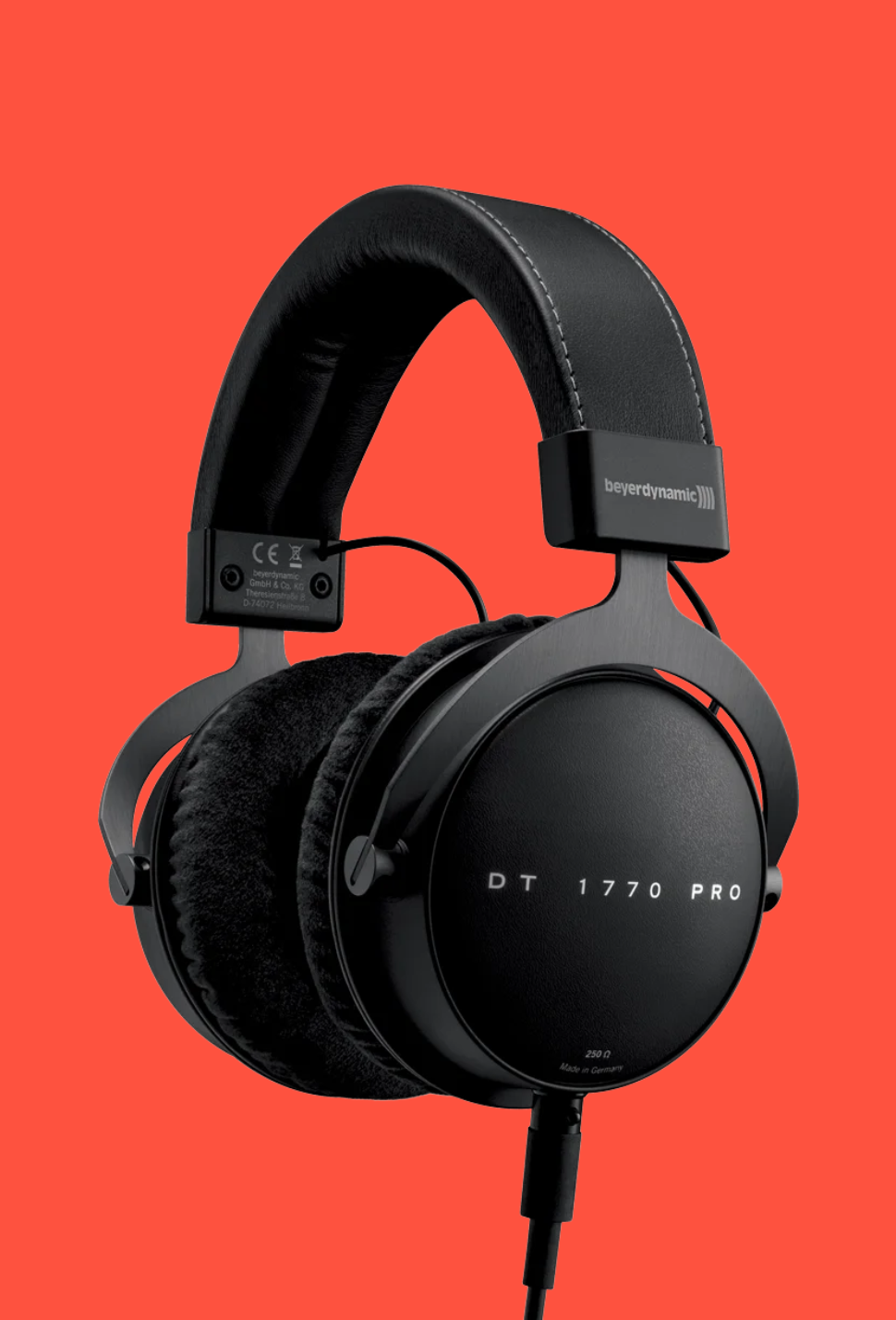
Best closed-back
Sometimes you just need to keep the sound out, whether it's for LAN parties or just at home. These not only do that but also deliver startlingly detailed audio, making them great for both gaming as well as audiophile listening.

Dave's been a born-again audiophile since his time running Techradar's Home Entertainment channel around half a million years ago (give or take) and after his first taste of high-resolution audio, speakers worth tens of thousands of dollars, and $51,000 headphones, he's been all in on what sounds good. Having tested the whole spread of different quality gaming gear he's best placed to say which budget cans still sound good, and which high-end headsets are worth the cash.
July 18, 2025: A momentous occasion! Something new now wears the 'best closed-back headphones for gaming' crown: the Beyerdynamic DT 1770 PRO MKII. As a result the previous closed-back champion, the Beyerdynamic MMX 100, has now been moved to our Also Tested. We've also completely removed the 'best studio headphones for gaming' category, so the Audio-Technica ATH-M50xSTS StreamSet now graces our Also Tested section instead.
April 29, 2025: The Sennheiser HD 550 has been added to the Also Tested section below. We also added some missing specifications to a couple of entries and fixed a couple of formatting errors.
March 12, 2025: We've checked over our recommendations (which remain the same), expanded on some of the review copy, and fixed some nav-related issues. We've also added the Heavys H1H to our Also Tested section, as while it's a brilliant sounding headset, there are better options out there for gaming thanks to its Bluetooth-only wireless option.
Best audiophile headphones
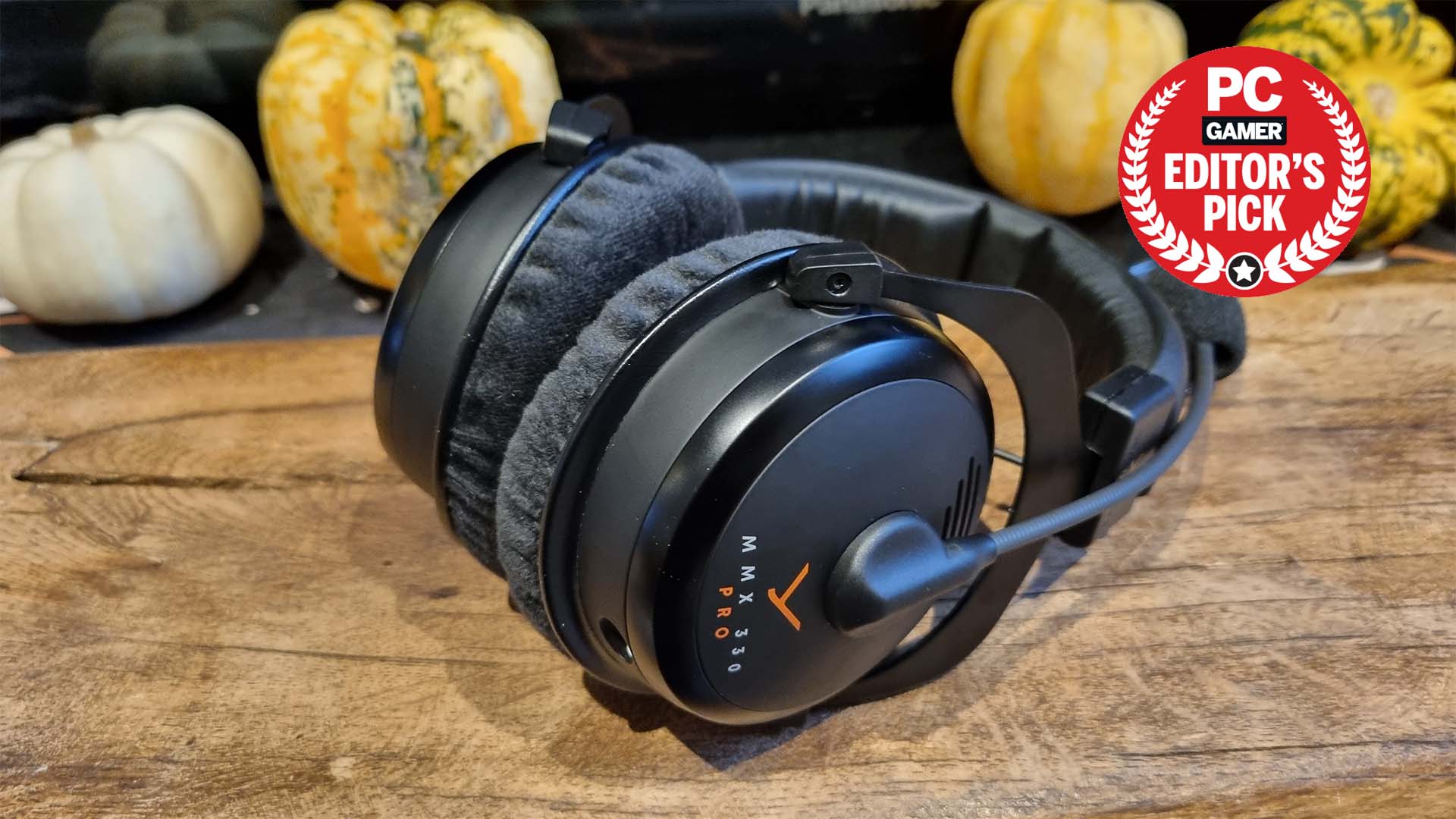
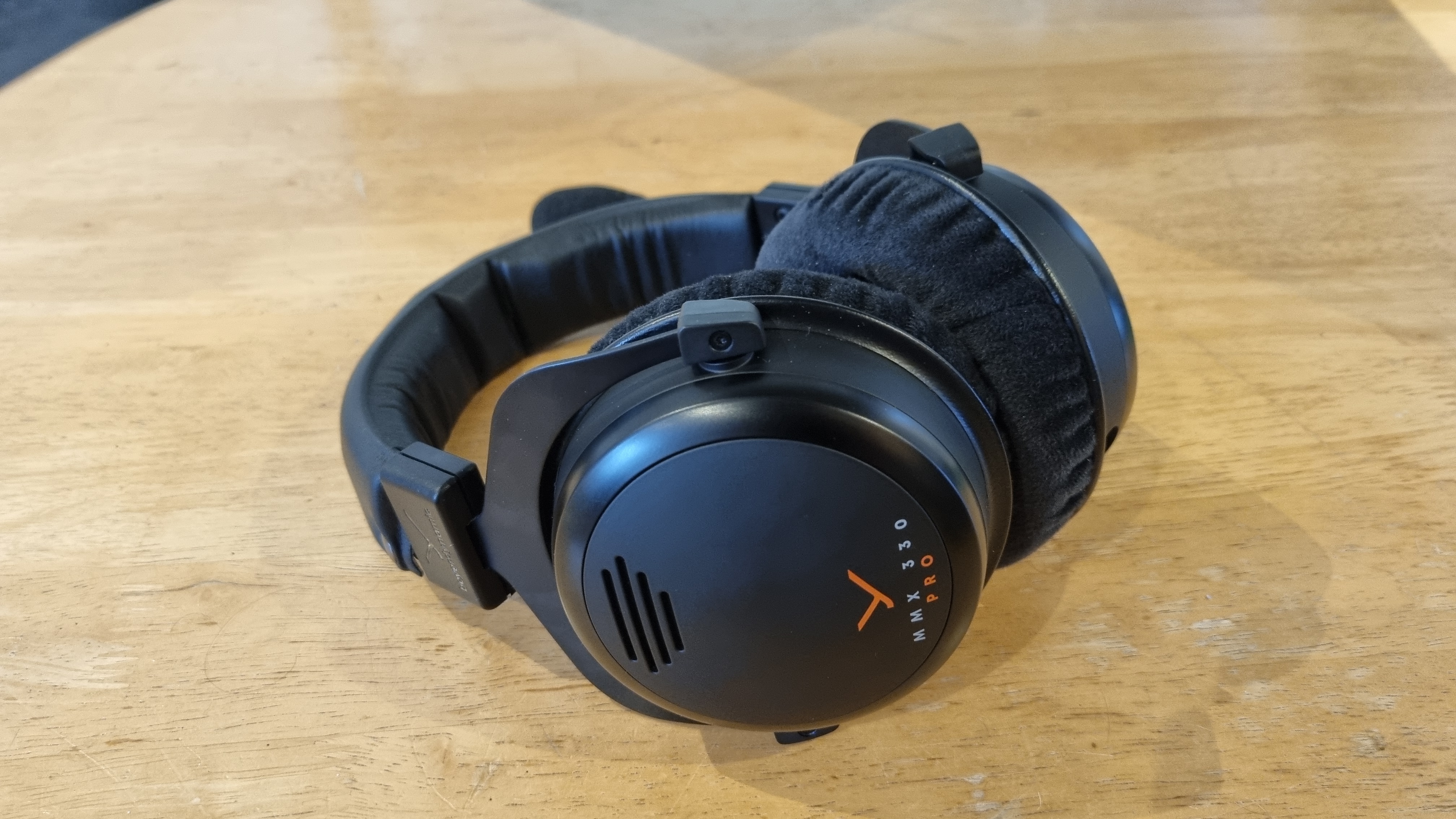
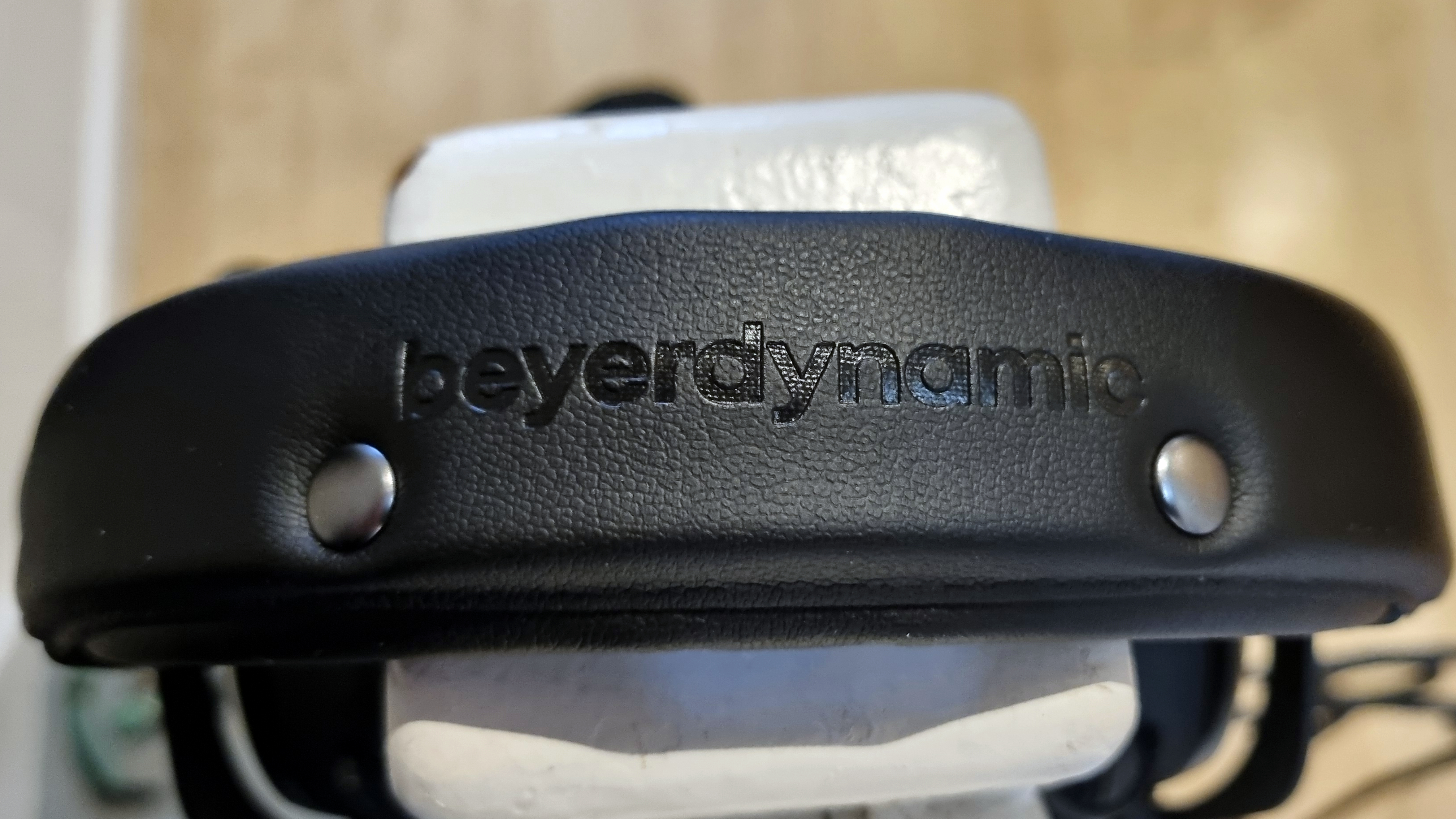
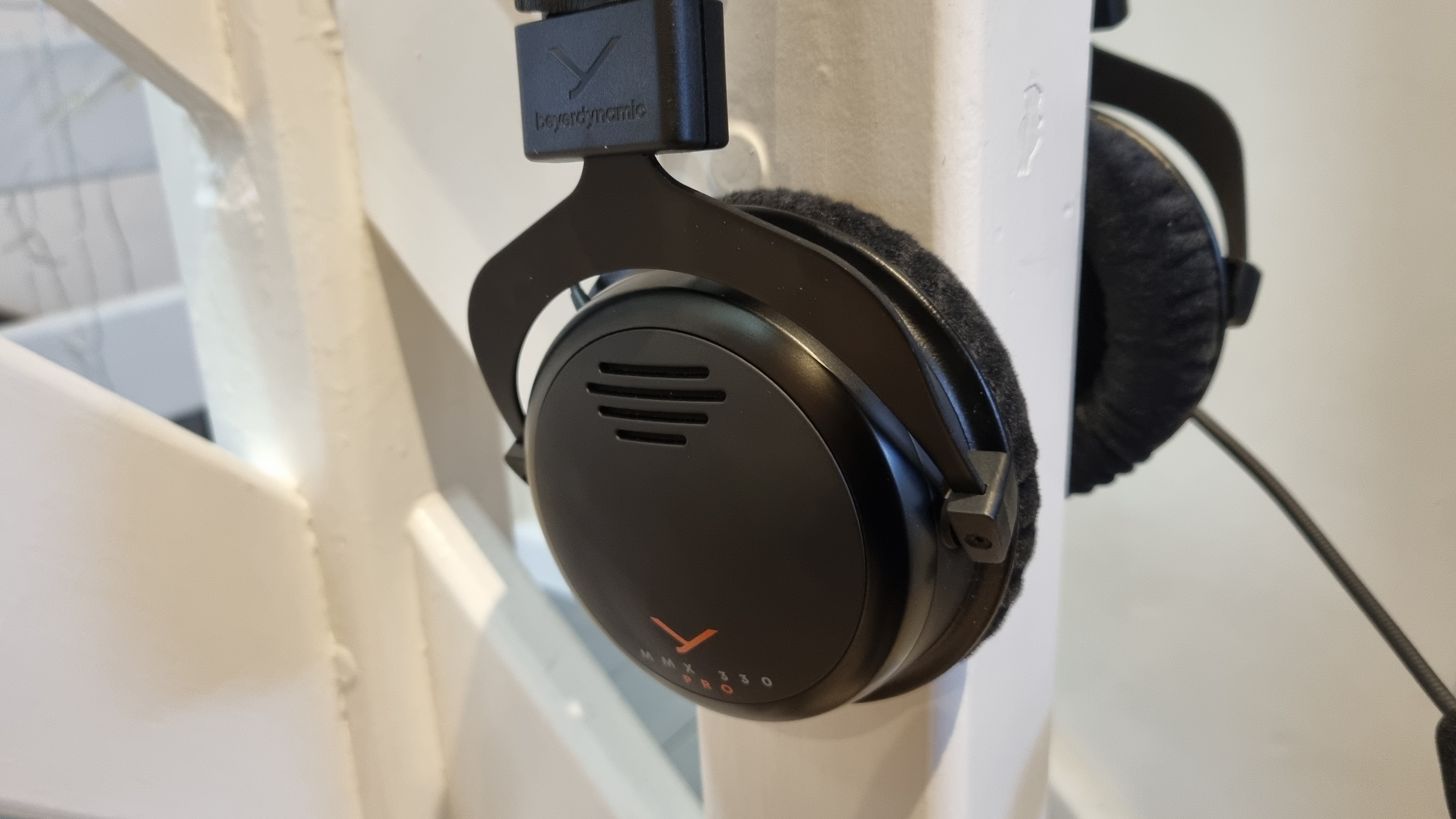
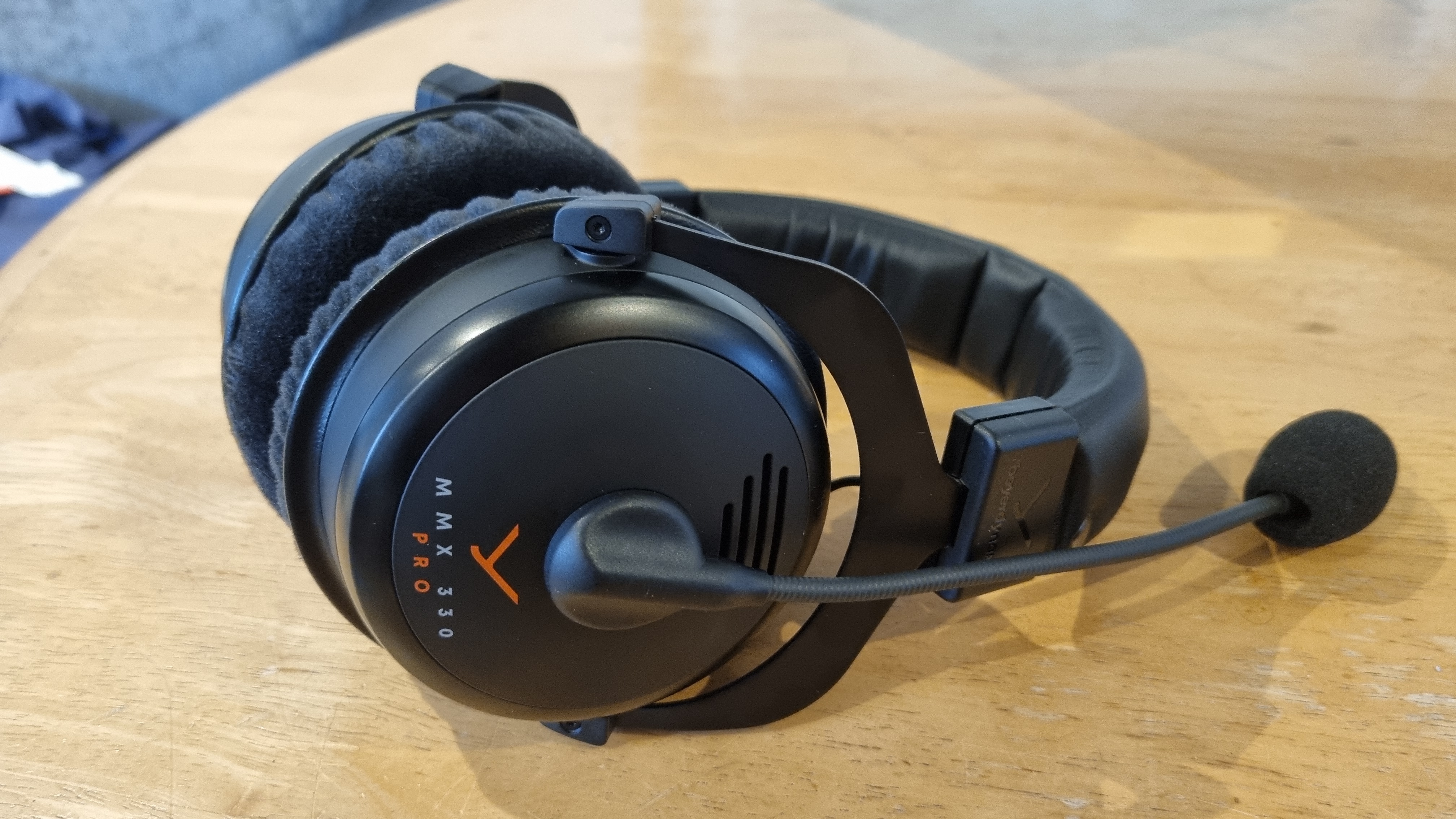
Specifications
Reasons to buy
Reasons to avoid
✅ If you want the best sound: The MMX 330 Pro is exceptional when it comes to all things audio.
✅ If you're looking for comfort: With huge velour pads and a memory foam headband, you can wear a set all day with zero issues.
❌ You plan on traveling around while using it: The relatively limited connectivity and pretty bulky wire make this a little awkward to use on the go.
The Beyerdynamic MMX 330 are the best audiophile headphones for gaming we've tried to date. Perfect for mixing and mastering audio, but brilliant for gaming, too. We'll get to sound in a moment, but let's kick off with the build quality and comfort.
Forget leather, the substantial pads are immensely comfortable compared to just about anything else you could wear on your head. Those gigantic velour cushions completely cover the ears and if you wear glasses, they're much more forgiving than most.
It's not just the pads, either. The spring steel headband has a good coating of memory foam, and the whole apparatus stays clamped to your head with a superb seal that makes for a perfect balance between comfort and sound isolation. You can still hear the world around you, mind, but it's decently muffled in a way that doesn't feel completely isolated, yet lets you disappear into your audio without distractions. It is worth noting that the clamping force is initially very strong, but over a few days of usage stretches out for a very comfortable, worn-in feeling fit.
This is an open-backed headset, which traditionally means you get a vaguer if perhaps more accurate sound than a traditional closed-back model. The MMX 330 Pro is immensely accurate, and it also delivers punchy bass that makes other, bloated, gamer-focussed headsets sound plain bad by comparison. The flat response might be pinpoint precise, but it's also got a surgical level of low-end accuracy that allows you to hear all the layers in a mix while still receiving a substantial kick.
It's not all about ambience, however. I'm not just recommending the MMX 330 Pro for immersion—if you're a fan of competitive shooters you'll be looking for something that reveals footsteps around corners, relative distance of opponents, and the sort of whizz-bang bullet-dodging action experience that doesn't just pull you into the game, but helps you become better at it, too.
It's also worth noting that, if you don't want sound leakage, you can get this pair of cans in a closed-back form too, though we haven't had the opportunity to try them for ourselves.
With all the qualities mentioned above, it goes without saying that if you are into content creation, the MMX 330 Pro will help you create the most accurate audio for your audience. Since a lot of us are now dabbling in some form of creation be it streaming, podcasting, or YouTube, these are a no-brainer.
Bottom line? If you're prepared to pay the entry fee (and we have a great budget option if it's a bit too steep) and can put up with the fact it isn't wireless, we highly doubt you'll be disappointed.
Read our full Beyerdynamic MMX 330 Pro review.
Best budget audiophile headphones
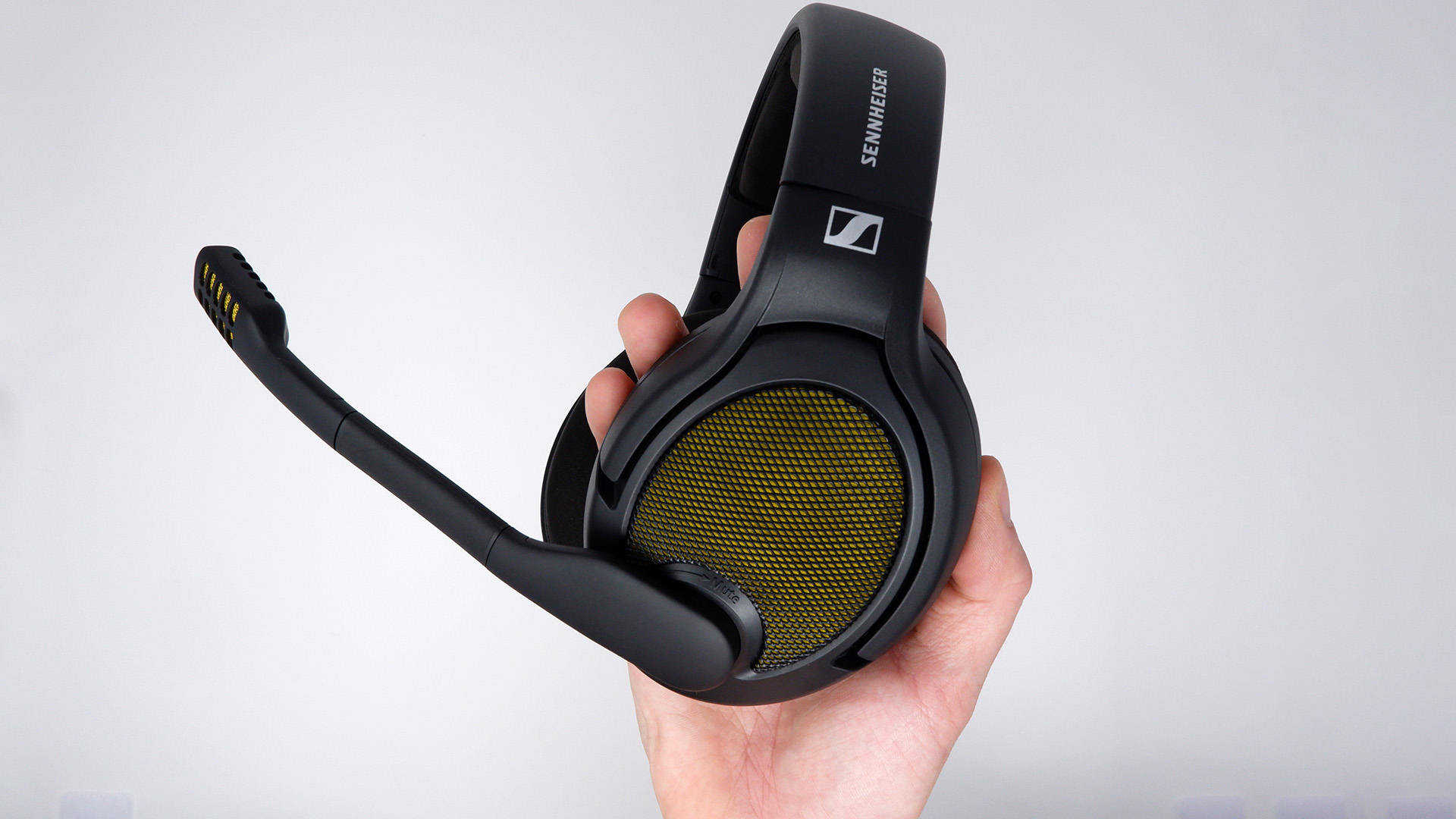
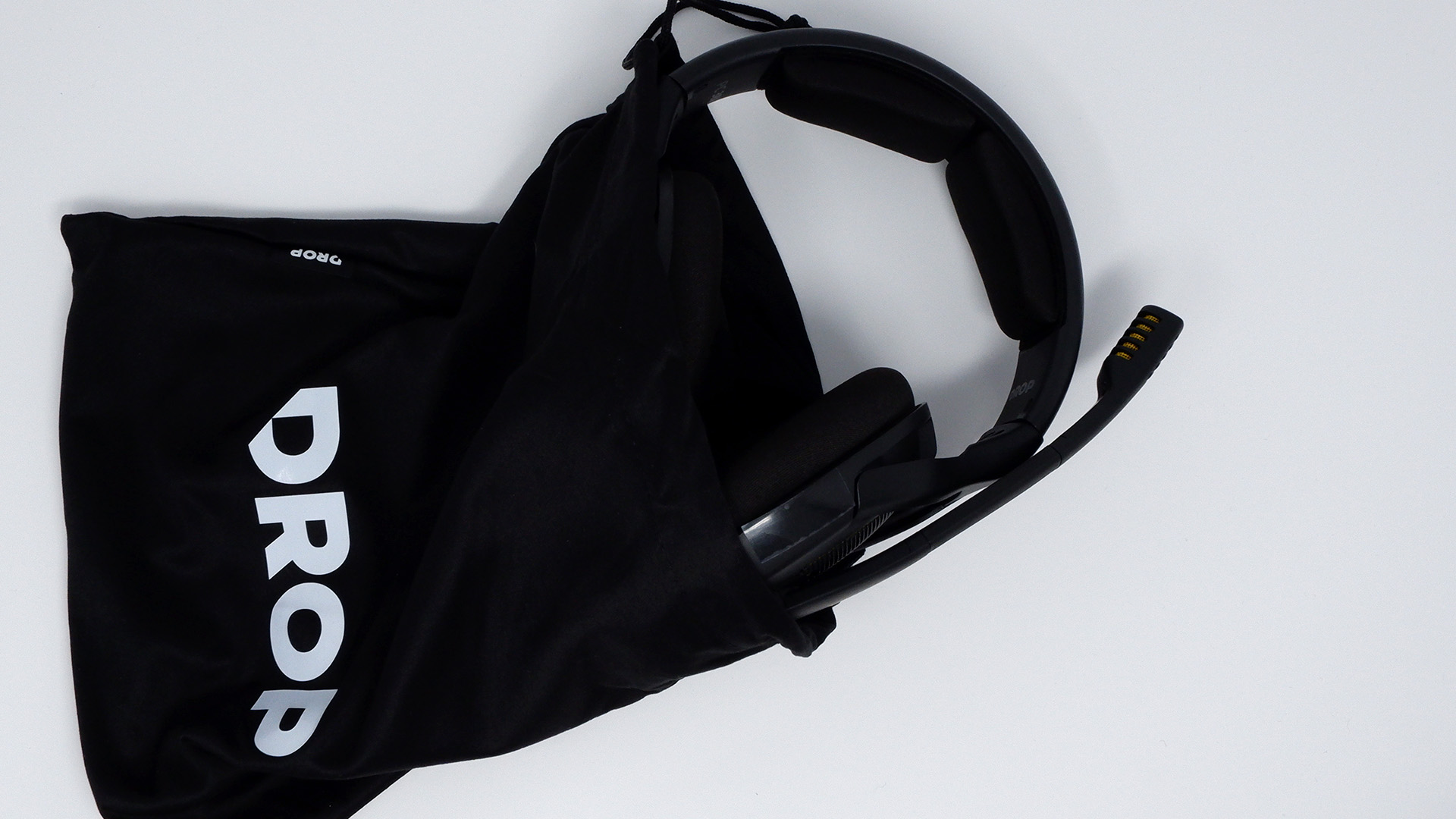
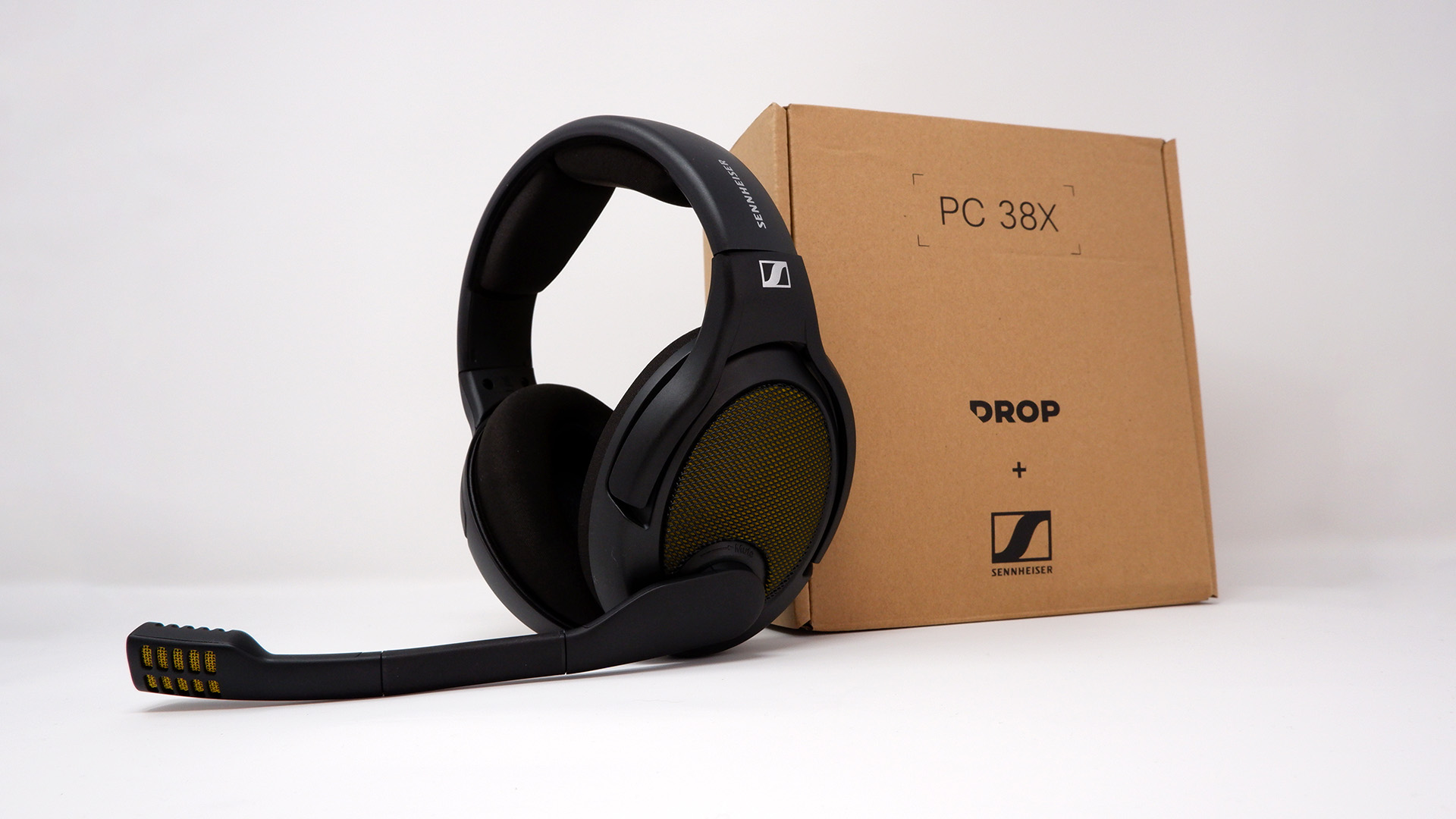
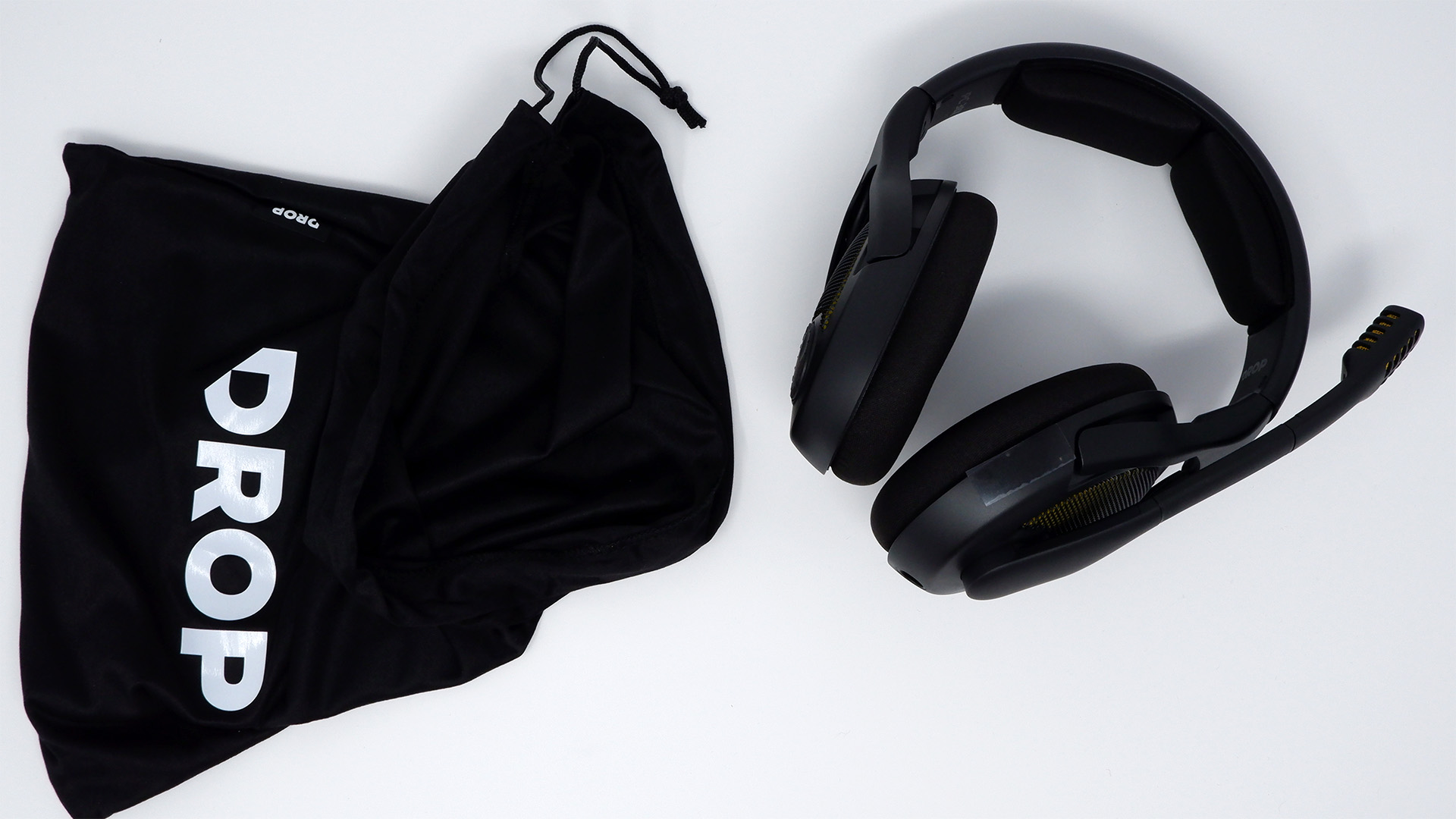
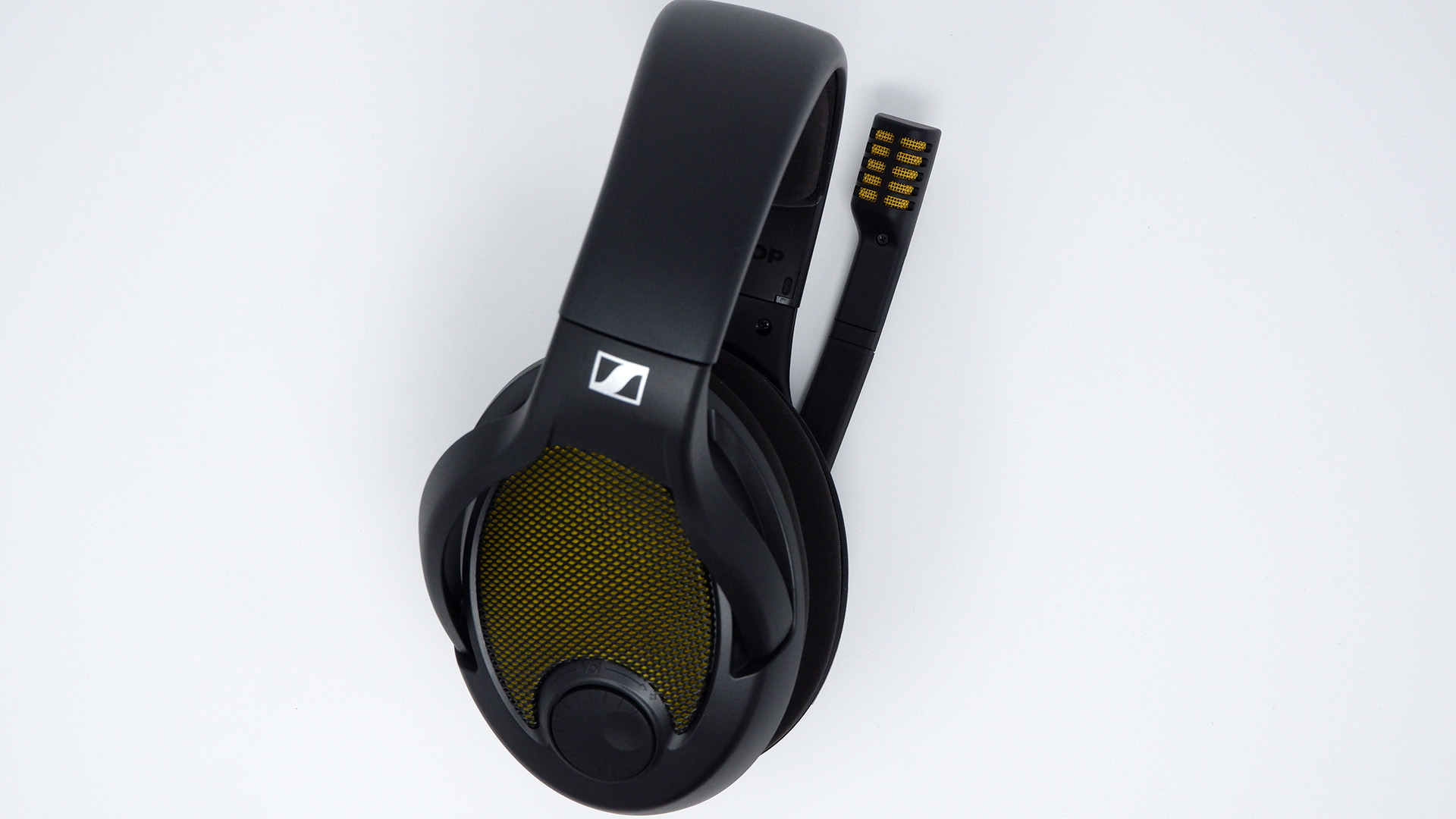
Specifications
Reasons to buy
Reasons to avoid
✅ If you love a punchy sound: The bass response here is excellent, but what's even better is the fact that it doesn't overwhelm the high and mid ranges.
✅ If you want a proper mic: Sometimes audiophile-grade headphones skip the microphone entirely, but here you get a massive one, with great audio quality, too.
❌ If you're on a very tight budget: Given the sound quality on offer here, the PC38X set is very good value at $140, hence our budget recommendation. If it's still more than you're prepared to pay, however, our best gaming headset guide has you covered.
Whether you consider this a pair of audiophile headphones is subjective. Admittedly, 'cheap audiophile headphones' is an oxymoron, as audiophile status is mostly reserved for the high-end. But I firmly believe there is great audio quality on offer at the lower scale of the price range, and these Drop + Epos (formerly Sennheiser's gaming division) PC38X headphones are the best budget audiophile headphones for gaming.
The PC38X is one of the best gaming headsets I've used in terms of raw audio quality. They're open-back, with a wide and open sound from the get-go, but they're also crisp and expansive. Whichever genre you care to throw at this pair will sound fantastic, although it must be said the Beyerdynamic DT900 Pro X does outmatch it, for a fair bit more cash.
The bass response delivers a surprising amount of punch, and while the classic Sennheiser-defined high-end is still present, it doesn't detract from the substantial mids, thumping bass, and well-defined frequency response. You can really feel the lowest sub-bass here, quite impressive for any set of cans.
It's not all about the tunes, however. When it comes to game audio, the PC38X shines with an atmospheric and spacious sound that allows Elden Ring's spooky ambient audio to ring wide and true, while still showing just as much aplomb banging out music in Forza Horizon 5. Hunt Showdown was also a highlight, allowing the precise imaging of the set to come to the forefront.
The benefit of these headphones being a primarily gaming affair is that the microphone is also a high-quality, and integrated, unit.
It's the same microphone and boom arm construction you'll find on any number of Sennheiser Gaming/Epos headsets today, but that's not such a bad thing. The flip-to-mute function works well and keeps the mic out of the way for regular use while allowing a comfortable distance from your mouth while speaking. You can also bend it around a little, which makes accurate positioning all the easier.
It's a great-sounding microphone, too, with decent bass response and an overall clarity that should help you cut through background noise to be clearly heard. It must be said, however, that it is a little prone to plosives, or "puh" sounds, and that's a bit of a shame. Still, overall it's a good unit and doesn't feel like an afterthought.
If you're foremost looking for high-quality audio, but you're on a tighter budget than most of the audiophile headphones in this guide ask of your bank account, my budget recommendation is absolutely the PC38X.
Read our full Drop + Epos PC38X review.
Best mid-range audiophile headphones
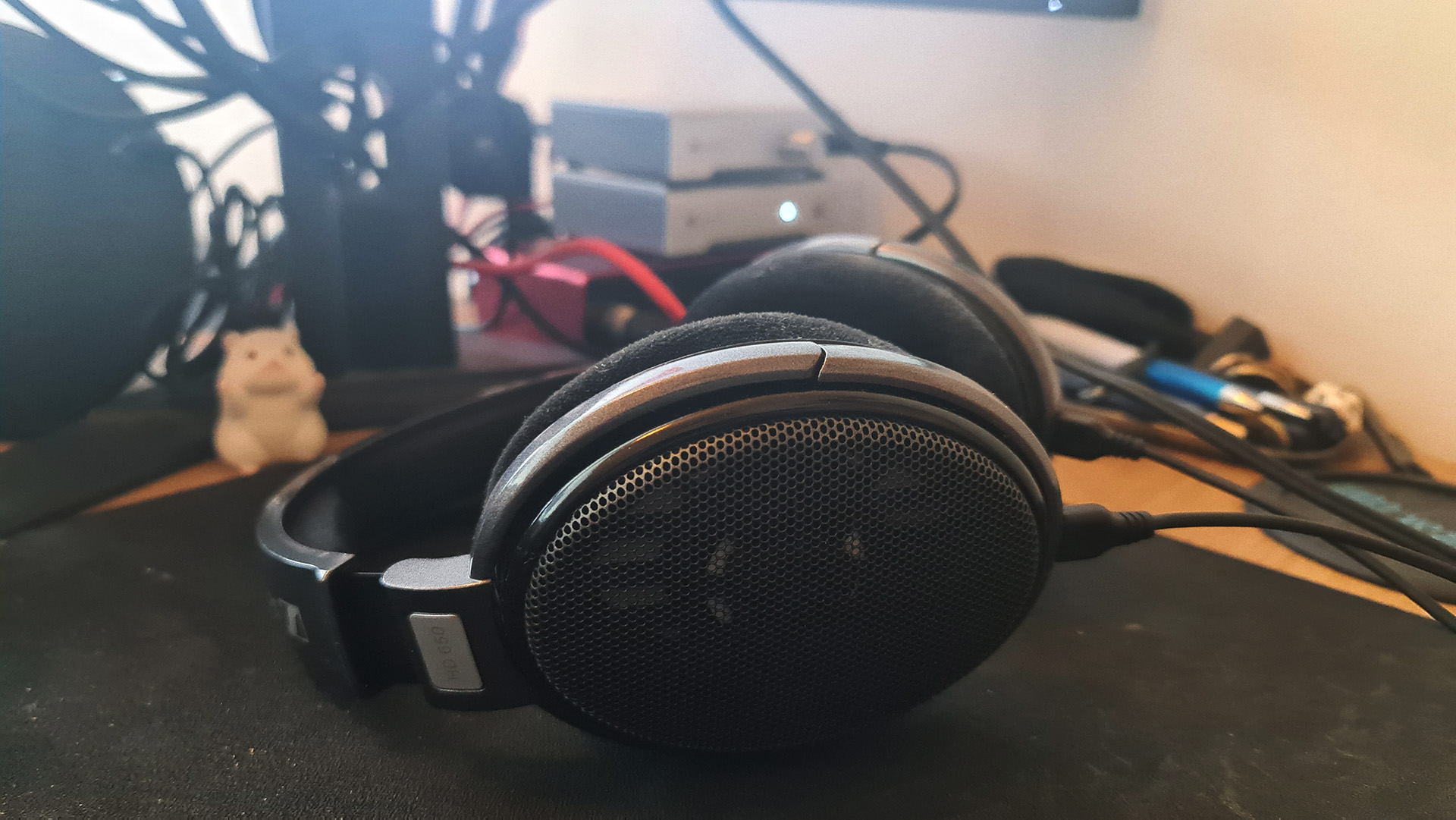
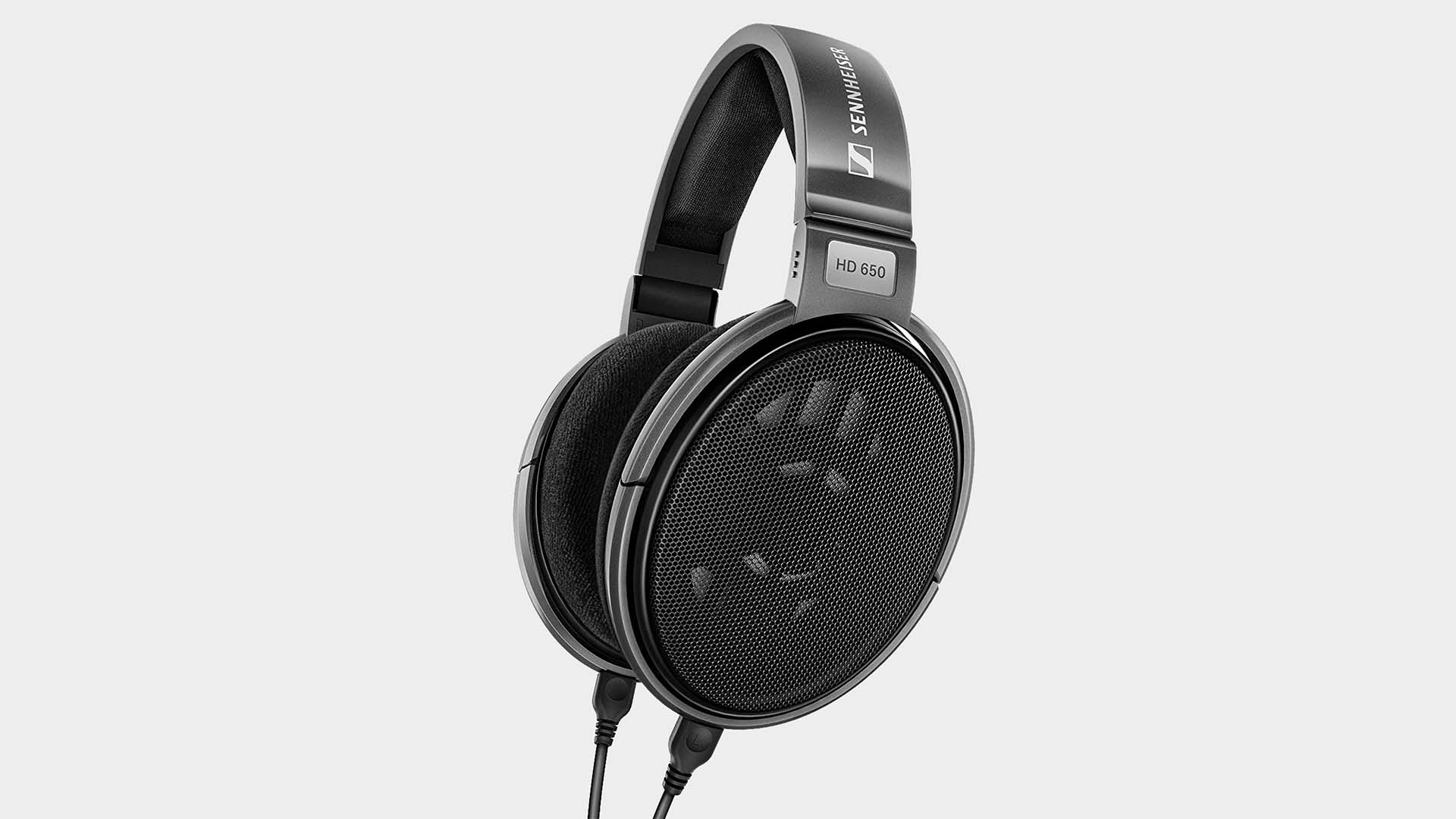
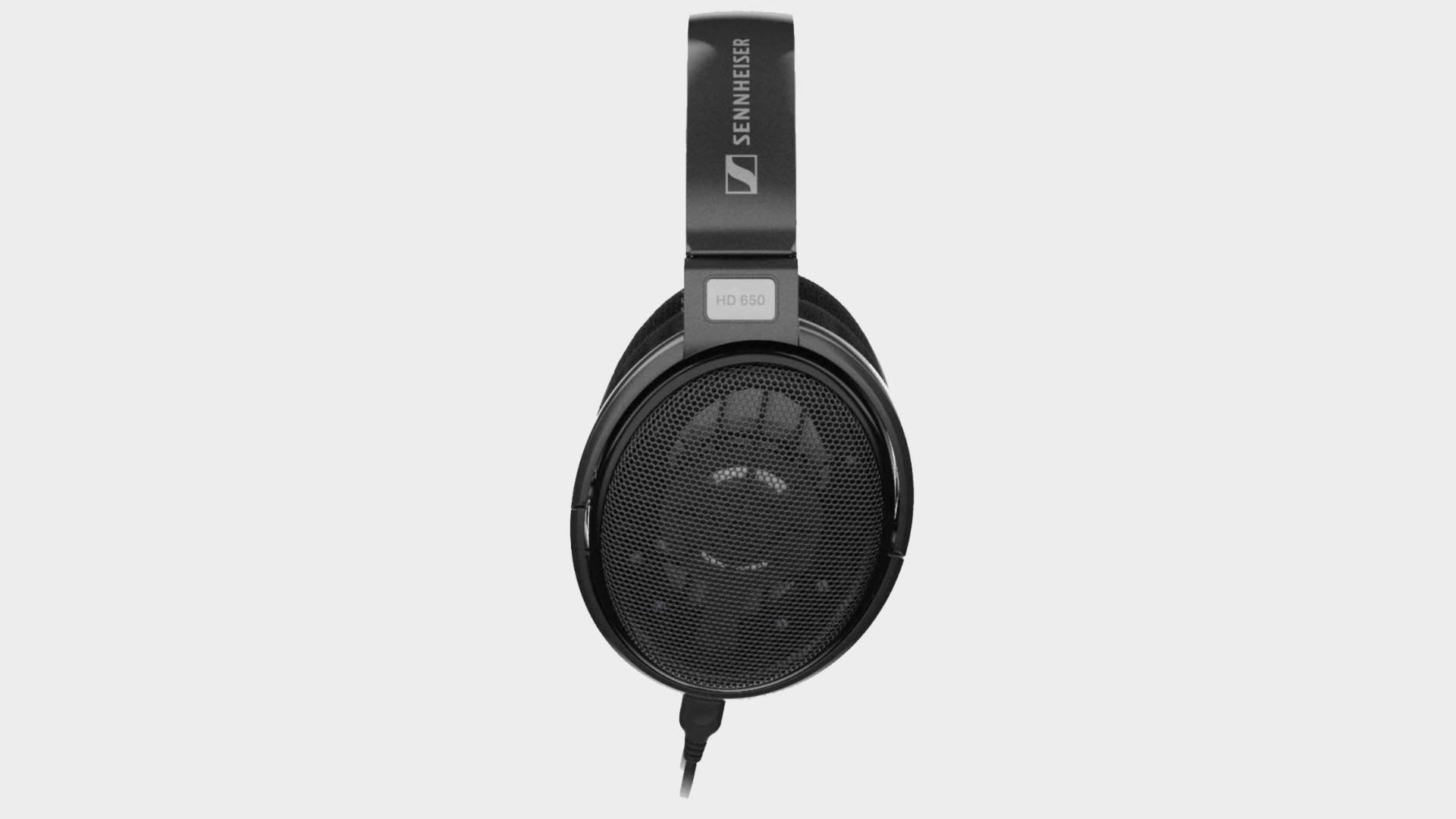
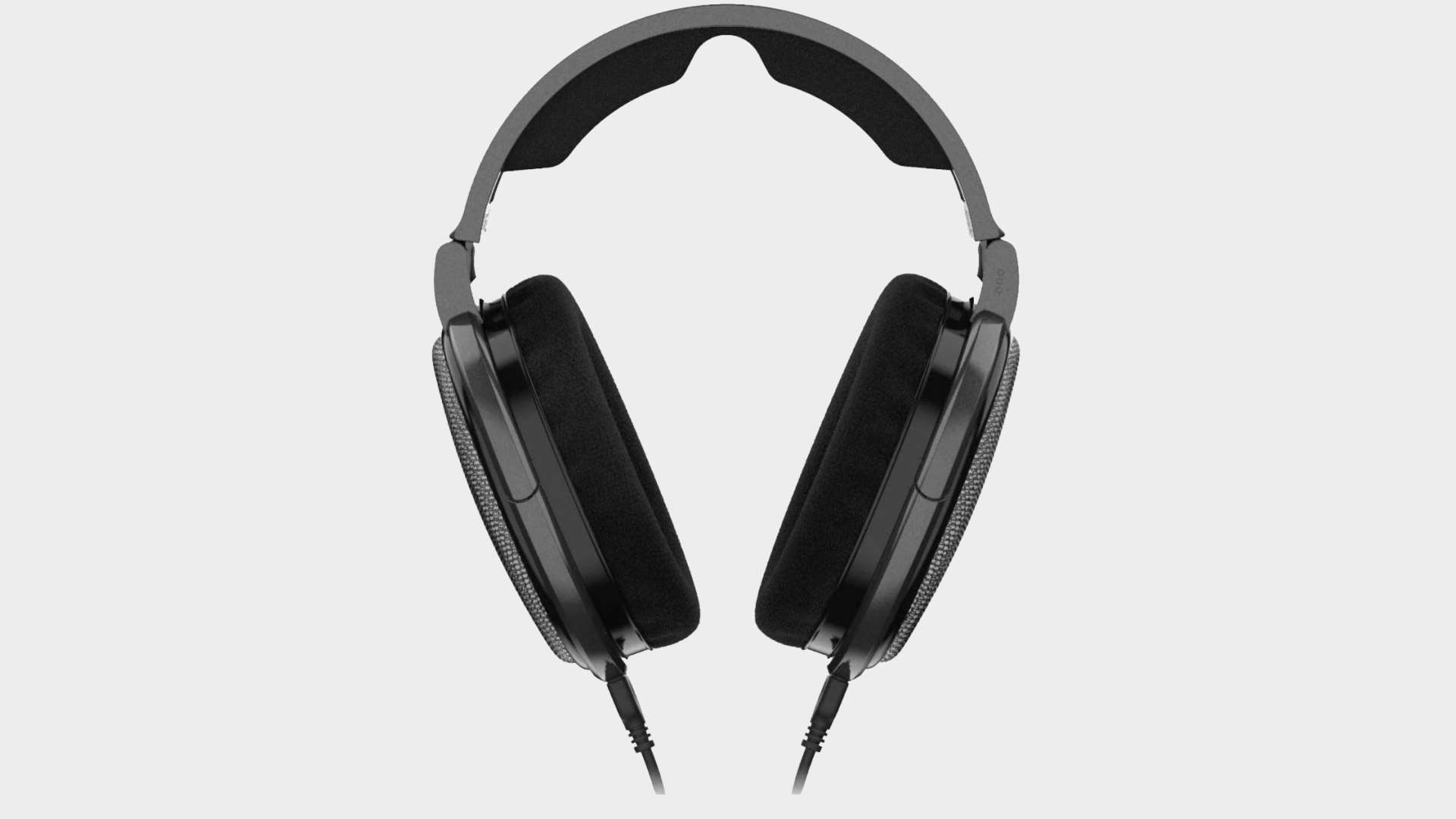
3. Sennheiser HD 650
Our expert review:
Specifications
Reasons to buy
Reasons to avoid
✅ If you want a balanced sound: Excellent highs, superb mid-range definition, and reasonable bass. Clarity is the order of the day here, not over-boosted thump.
❌ If you want a lot of bass: While the sound profile is balanced, those looking to feel the push of heavy low-end are probably better off looking elsewhere.
Sennheiser has made a mighty name for itself in the audio equipment game. That's primarily built on headphones like these: the Sennheiser HD 650. This quality pair of cans set the standard for high-end home audio thanks to highly detailed drivers and a gorgeous open sound, and it's why we recommend them as the best mid-range audiophile headphones for gaming.
Jacob uses this exact pair of audiophile headphones at home. They're his pride and joy, so, yeah, he's been raving about them. But they really are very good for the money. He landed on the HD 650, as the tried and tested audiophile option.
The HD 650 is a prime advocate of the so-called "Sennheiser sound". That means it excels at the high-end and delivers superb clarity and definition right the way through the frequency range. I've found it is definitely lighter on the bass response compared to most gaming headsets and planar magnetics, though, and whether that flatter sound works will have to be up to you.
But you could say that lighter bass is because this pair of headphones isn't trying to augment your audio—only delivering something close to the real digital deal. For that reason, we think this is a great headset if you want to chase spotless audio delivered impeccably through a wide soundstage. That's also why it's a shoo-in for every aural experience, be that gaming or listening to music. For us, it's a great fit for pretty much everything.
Those of you looking for some punchy bass, mind, may well be better served by our budget options, the Drop + Sennheiser PC38X, or perhaps the weighty yet defined low-end of the Beyerdynamic MMX 330 Pro.
These also aren't cheap, but if you baulk at the price, the Sennheiser HD 650 are very well built and the second-hand market is a great place to find a slightly cheaper pair. We wouldn't pay the full price as listed on the Sennheiser Hearing website today ($400!), as you will find a new pair for cheaper elsewhere. But don't expect any massive discounts (unless you're lucky); these headphones tend to hold their value.
One thing to note: Sennheiser sold off its audiophile headphone business to hearing aid company, Sonova, in 2022. There's not been much of a change in how things are run since the acquisition has gone through, and you'll still find the same headphones as described under the Sennheiser brand. There's just been a corporate change-over in the background.
The best wireless headphones for audiophiles
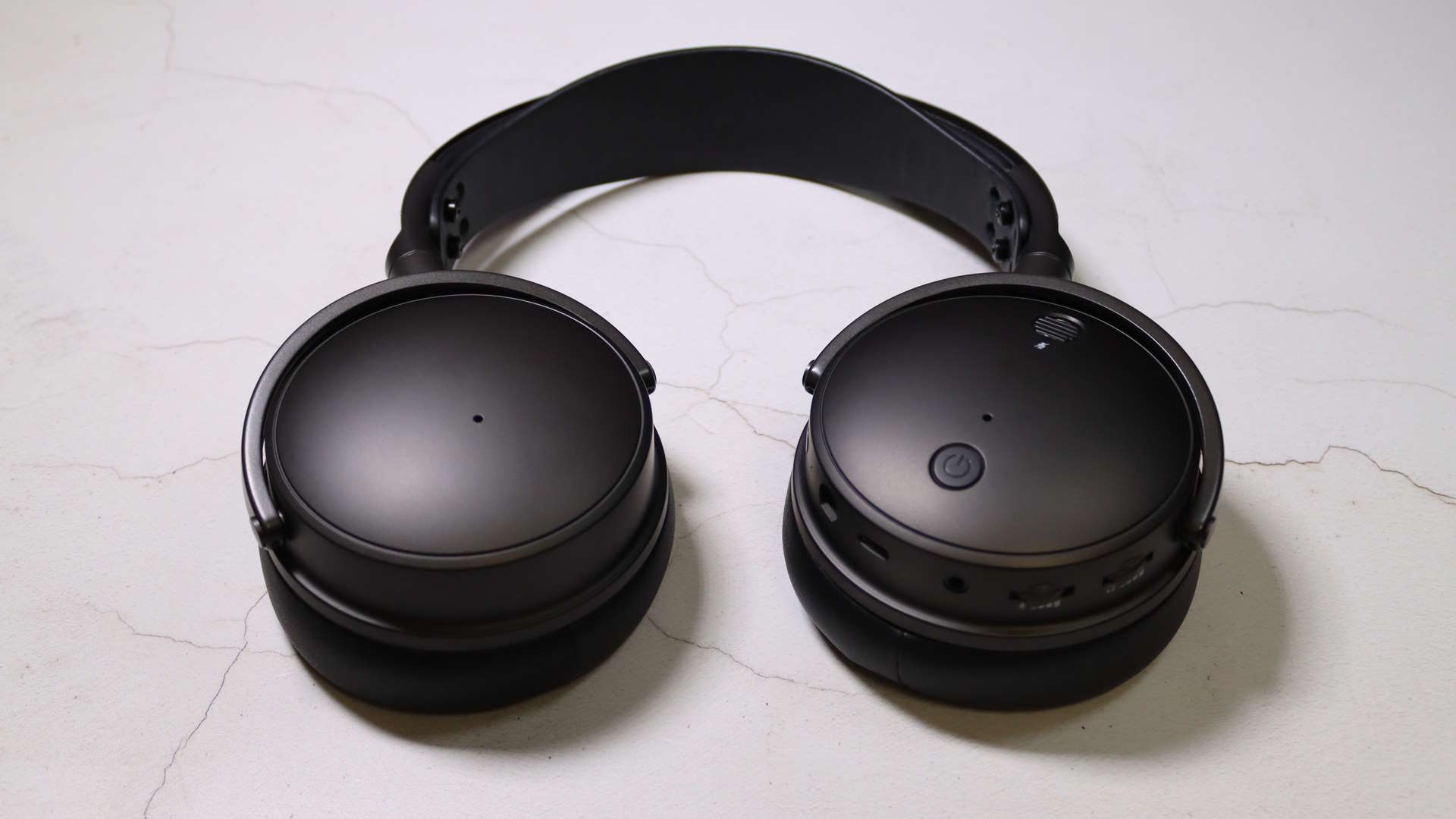
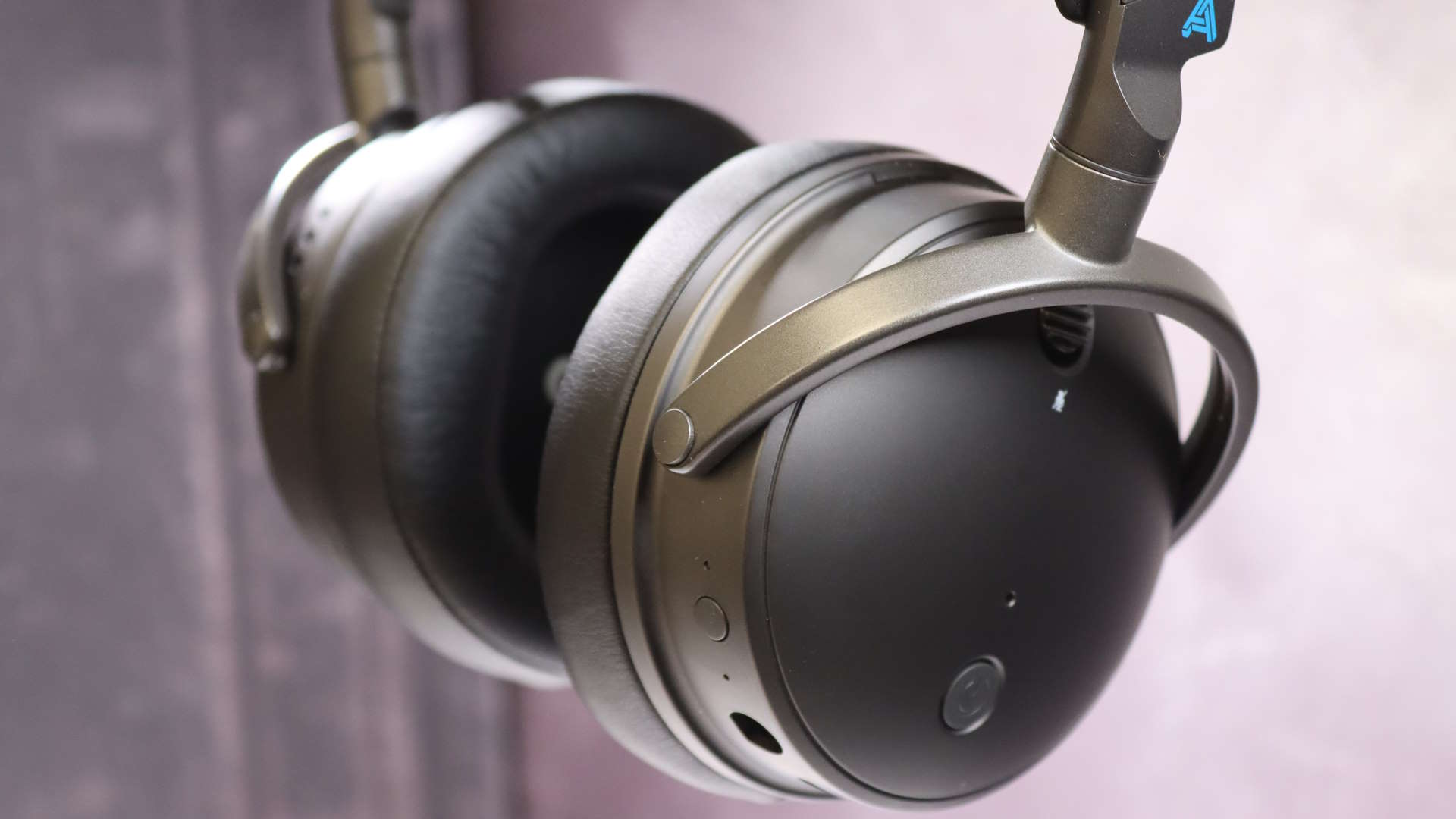
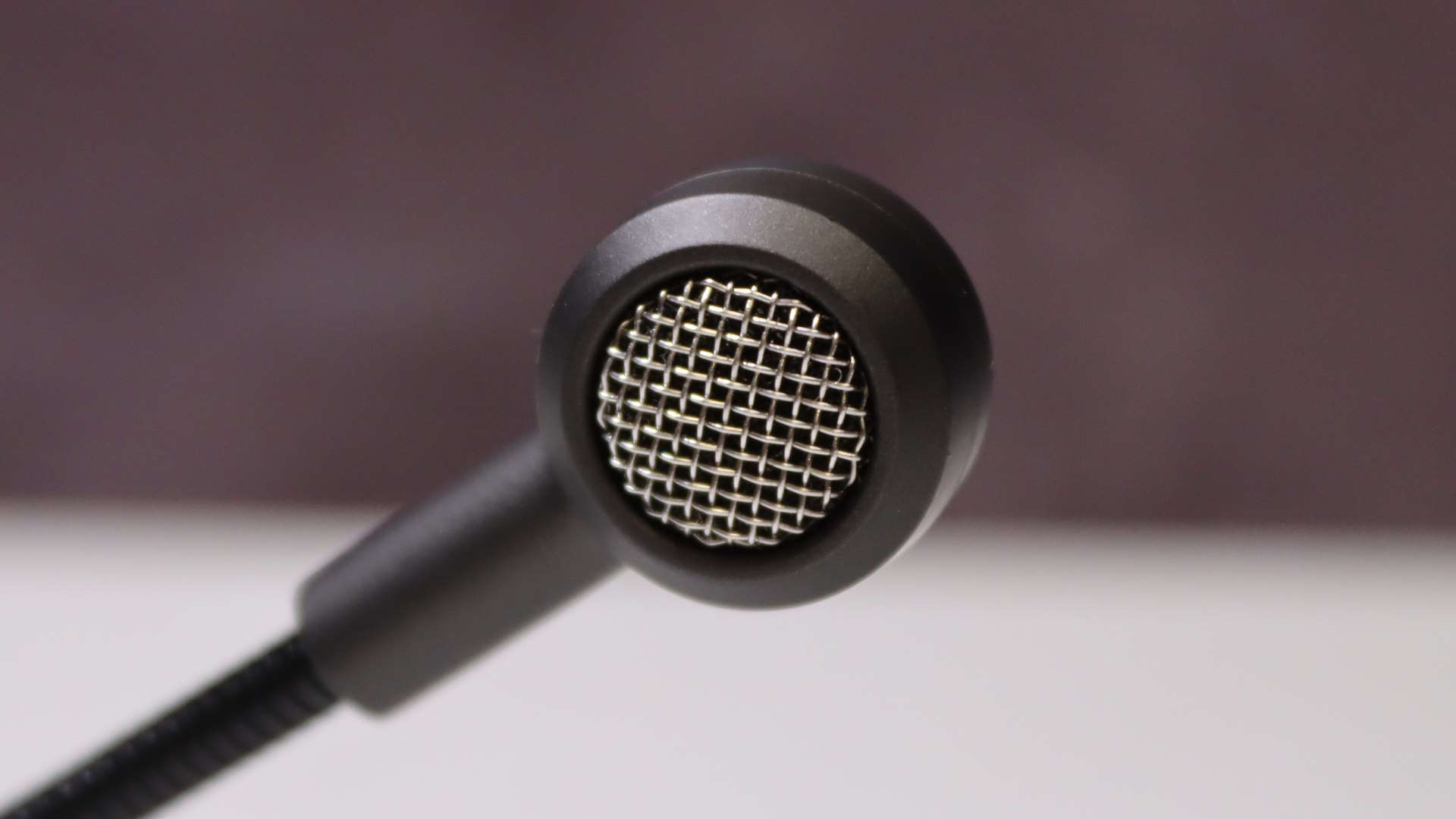
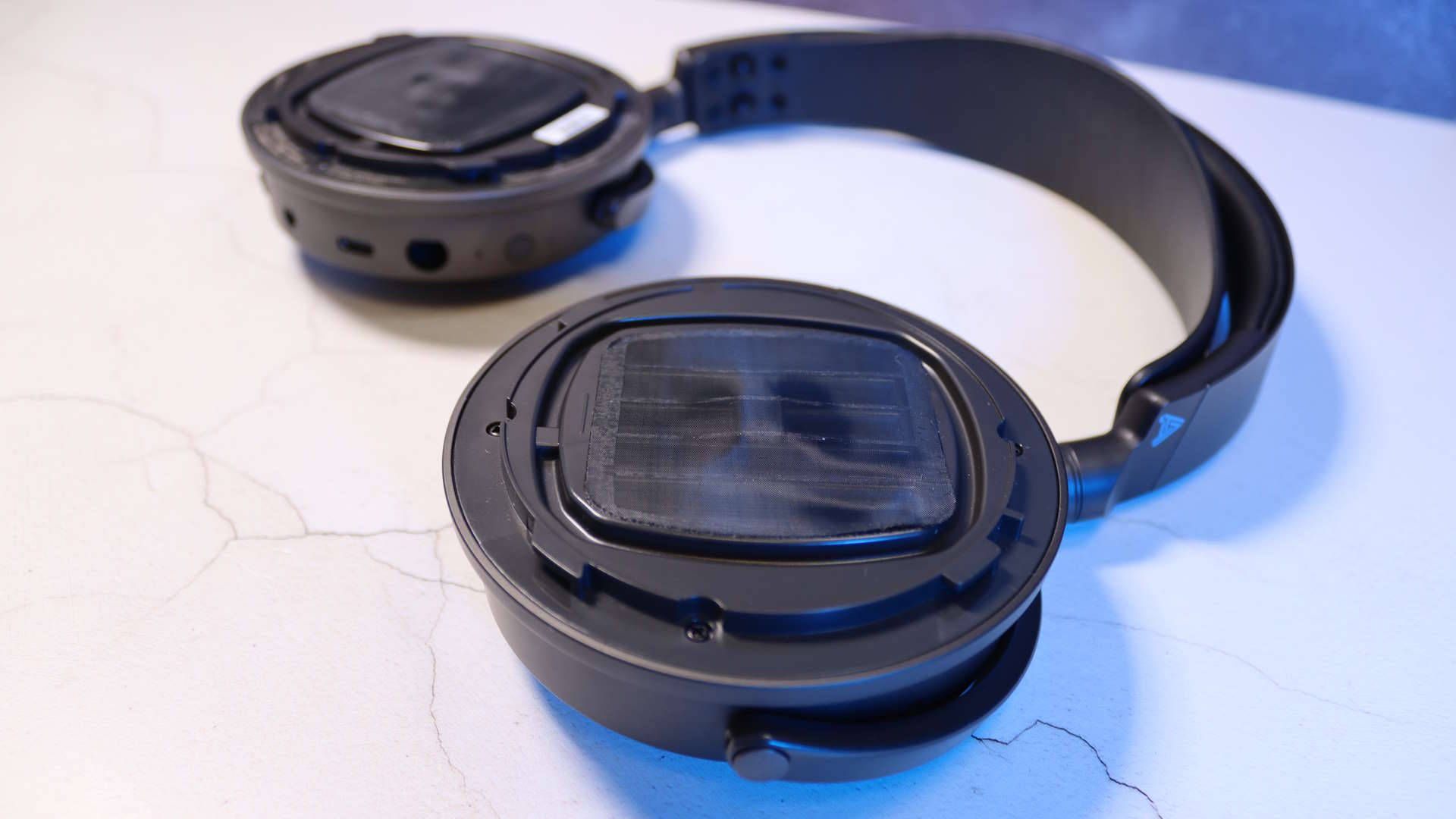
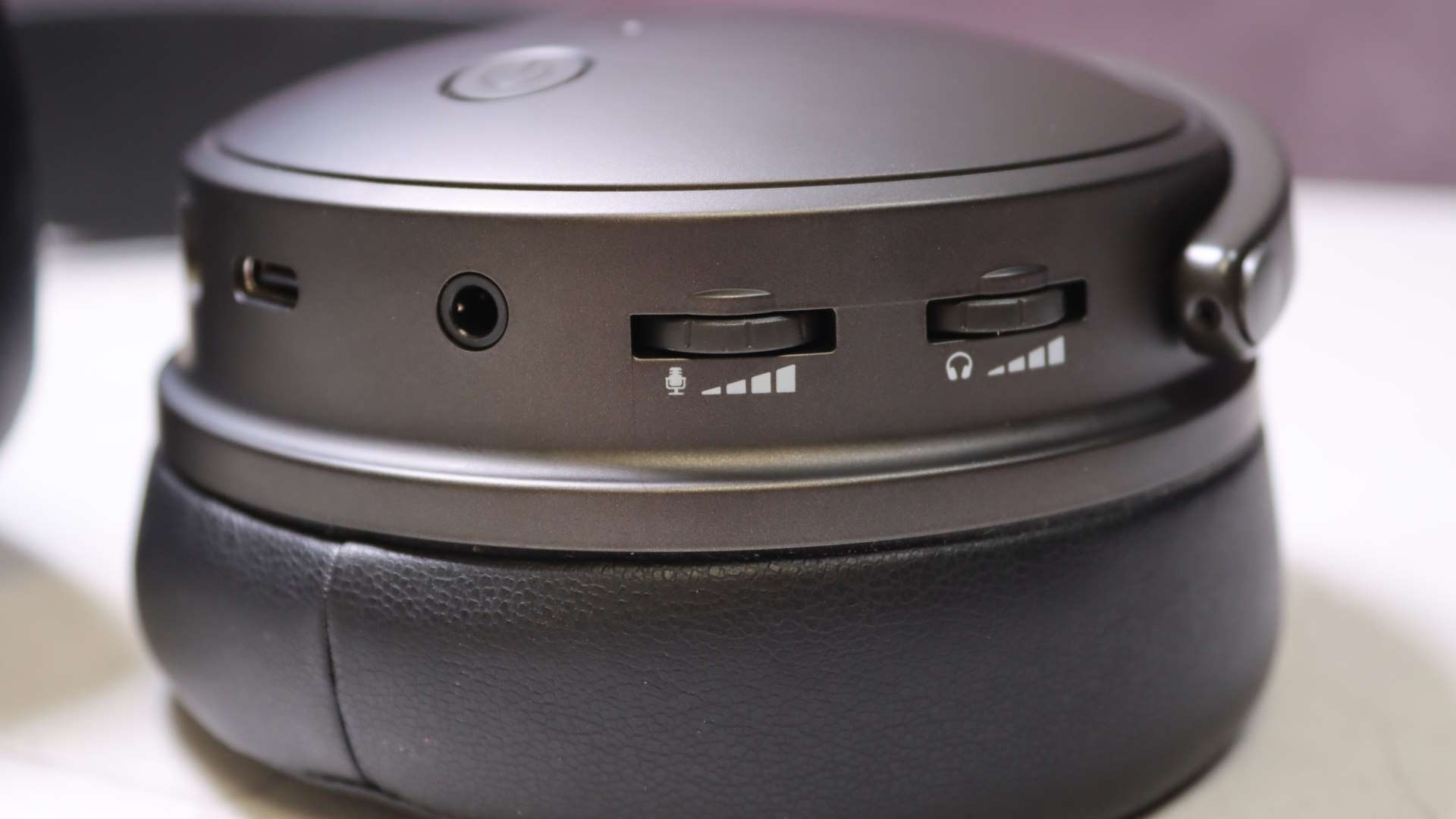
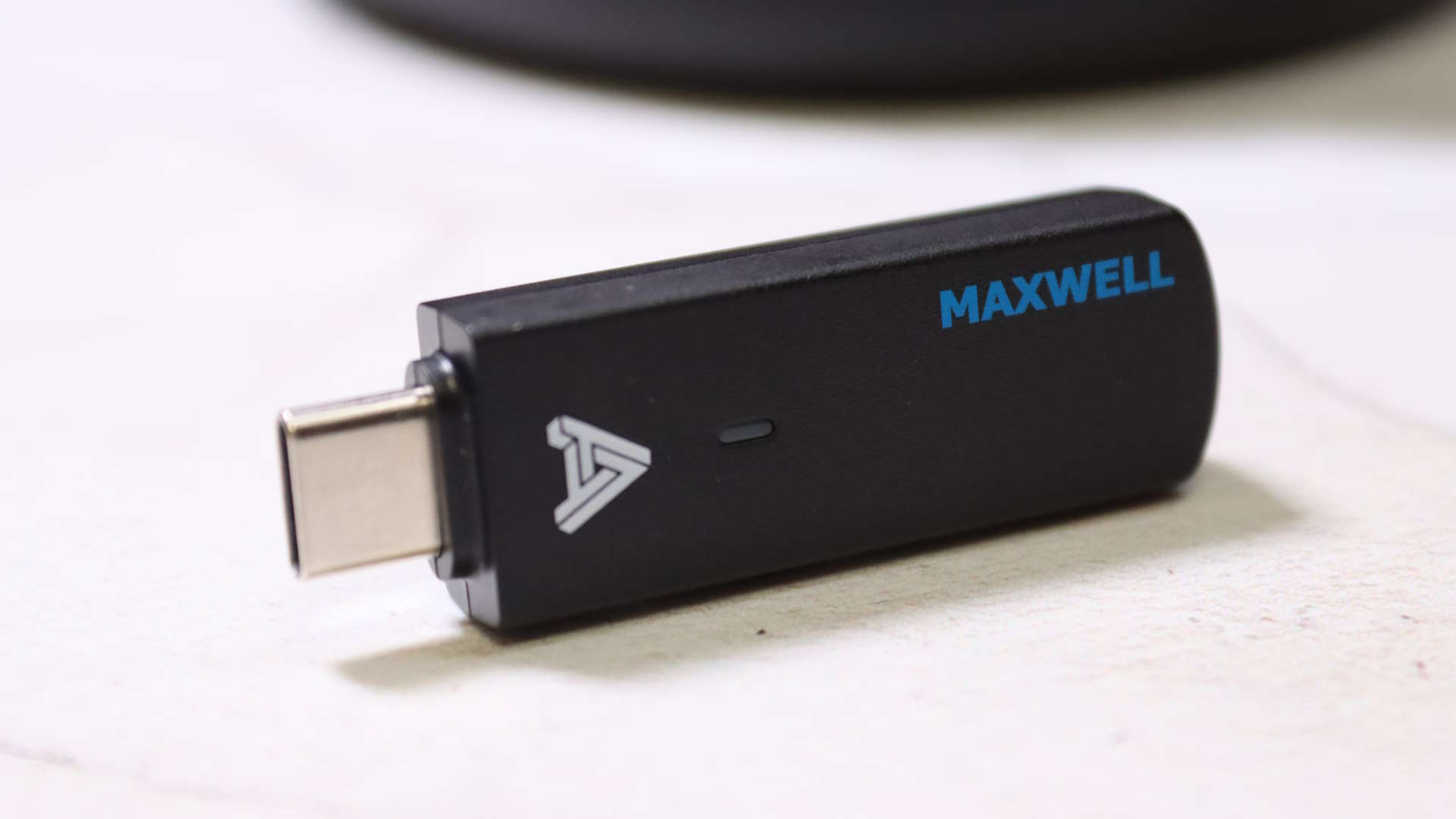
4. Audeze Maxwell
Our expert review:
Specifications
Reasons to buy
Reasons to avoid
✅ If you want exceptional sound, yet wireless: The planar magnetic drivers here are some of the best I've heard, proving that audiophile-level sound is possible in a wireless set.
✅ If you want great battery life: 80 hours is substantially more than even some of the best standard gaming headsets, meaning you can go longer between charges than most.
❌ If you want something light: They're overbuilt in a good way, the Maxwells, but at a cost—and that cost is weight. They're comfy, but the mass can become tiresome over long periods.
Audiophile headphones are not supposed to be wireless—and yet the Audeze Maxwells are the best wireless headphones for audiophiles. They are ridiculously good, all thanks to a pair of truly stunning 90 mm planar magnetic drivers.
If you're unfamiliar, these differ from the usual dynamic driver design found in most headphones by utilizing a pair of magnets on either side of a flat, rather than cone-shaped diaphragm.
Long story short, this method of sound reproduction is much broader and more natural to your ears, and the level of detail and punch these cans are capable of delivering, as a result, is genuinely astonishing.
Beyond the way they wrap themselves around your music and deliver it in a wider and more detailed way than you've likely ever heard before, those fancy drivers and that super-wide soundstage mean that the immersive nature of your favorite game worlds is delivered better than ever before, which makes them a superb way to lose yourself inside the experience.
This is all delivered via closed-back earcups, which (although there's no active noise-canceling like the excellent Nuraphone) deliver superb passive sound isolation that further adds to the immersion of the experience. They are all-encompassing in a very pleasing way, and you shouldn't have any problems hearing your music or your games in a noisy background environment.
Battery life? 80 hours. The included detachable microphone? Clear, defined, and well thought out (there's also a set of beamforming mics if you don't fancy the capsule being in your face while you're gaming).
It's not all roses, of course. They're really rather heavy, which (while adding to the overall feeling of quality) can get a little tiring after wearing them for long periods of time. The included software is fiddly, clunky even, and could definitely do with more tweakable options.
But beyond that, the Maxwells are about as brilliant a pair of wireless headphones as you're going to find, and at a retail price of roughly $300/AU$549, you could almost call them good value given the level of audio experience they deliver for the money.
Aural nirvana, without the wires. It doesn't get a whole lot better than that, does it?
Read our full Audeze Maxwell review.
The best closed-back headphones for gaming
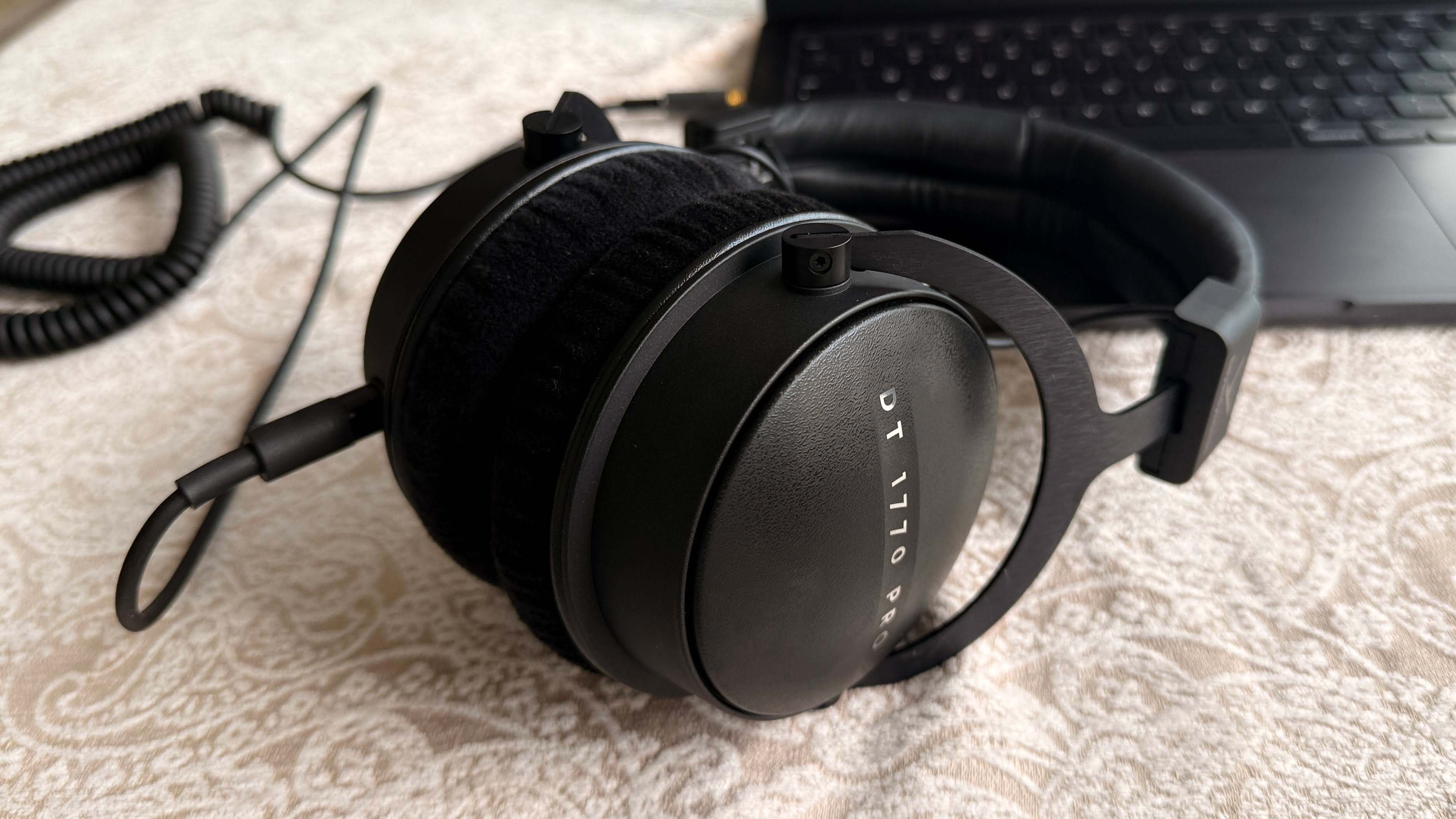
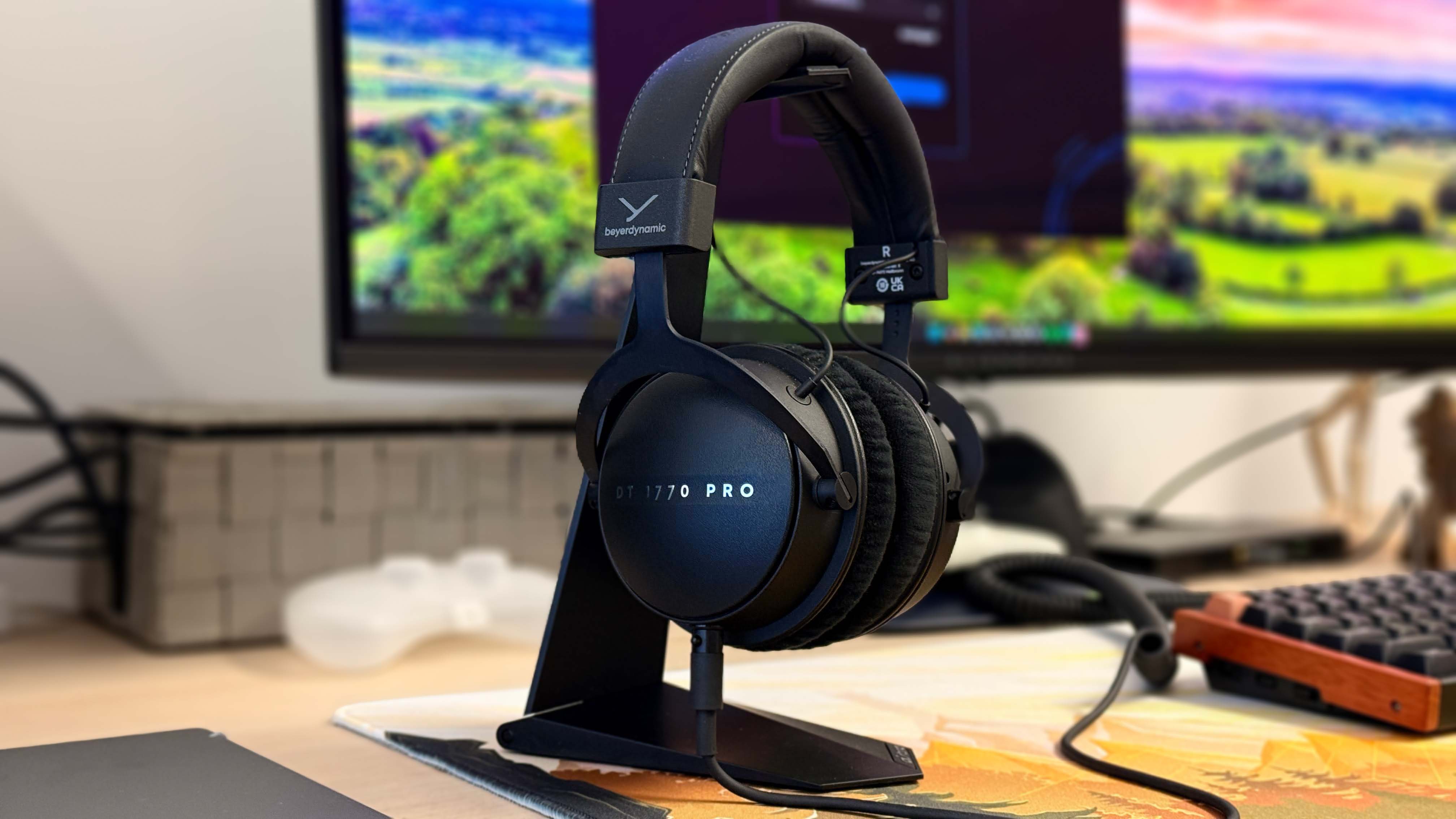
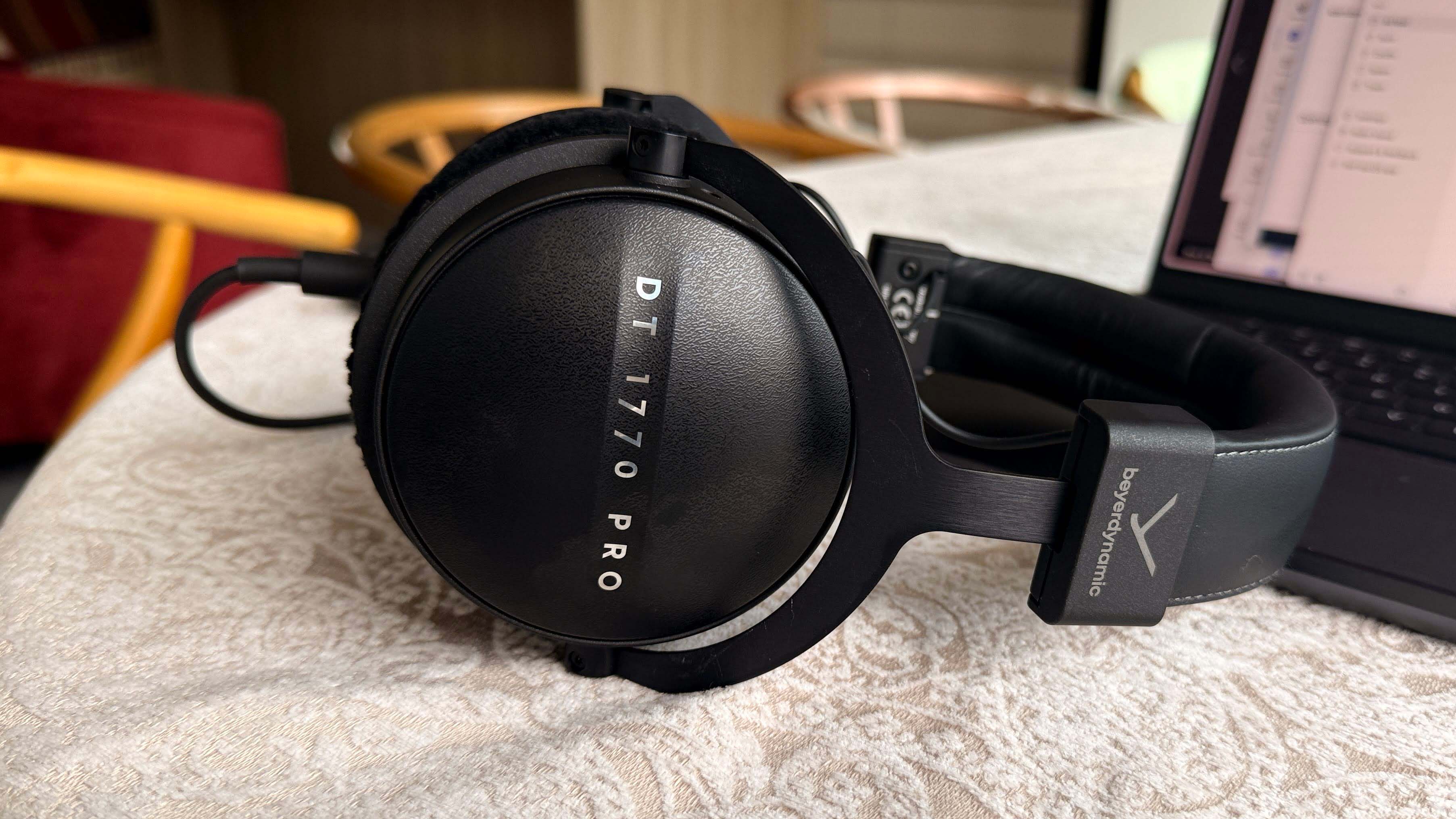
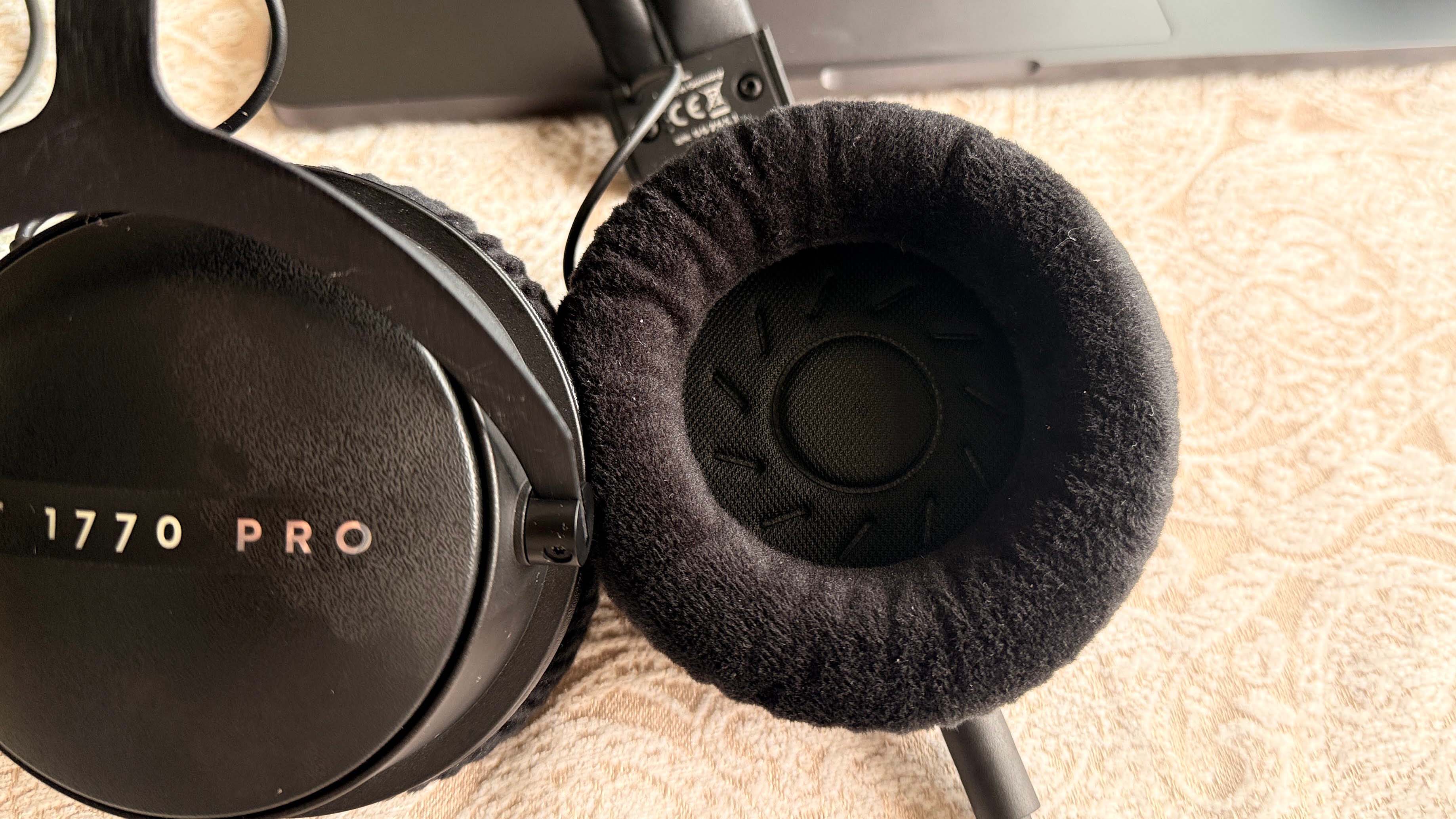
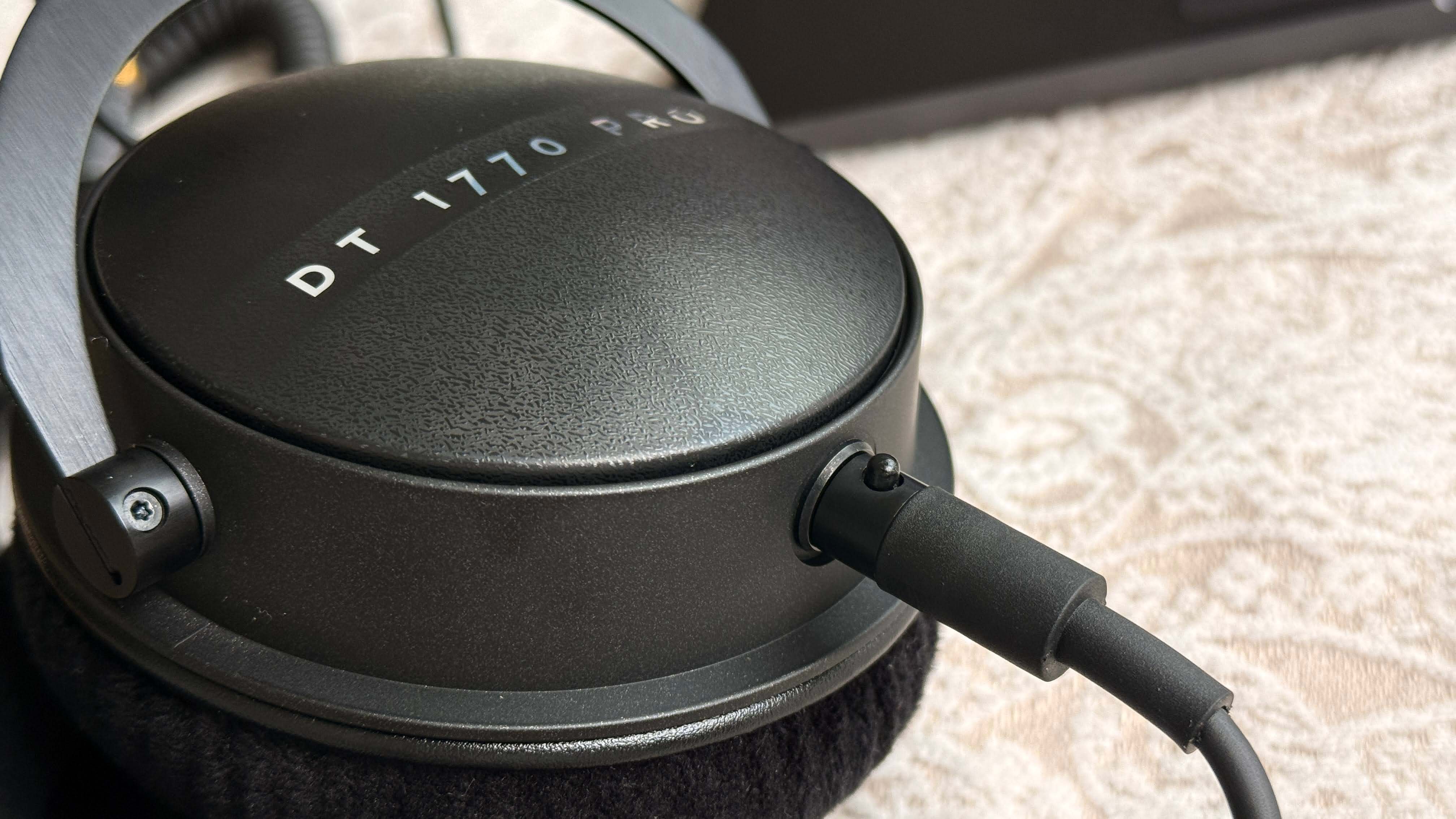
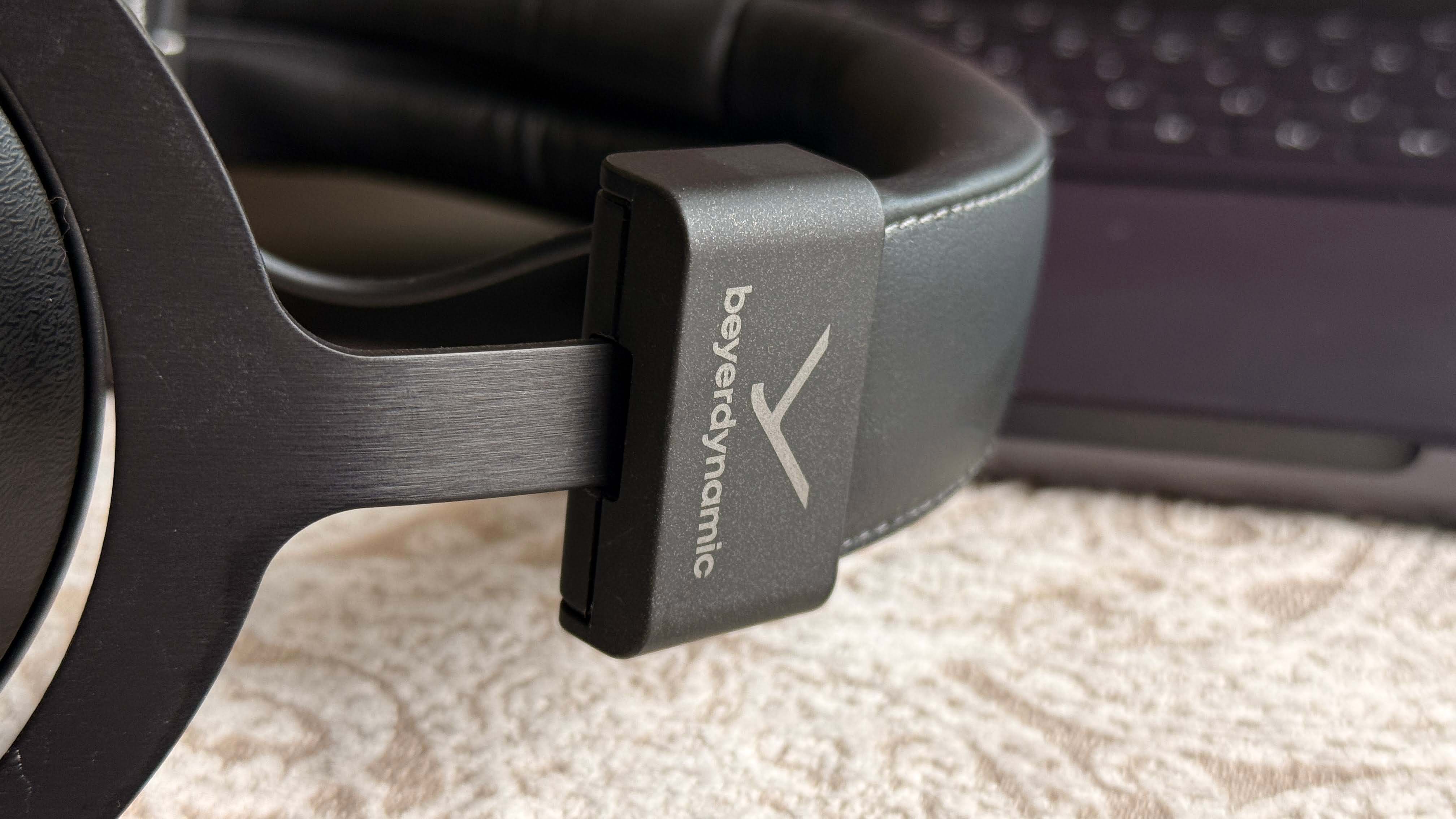
Specifications
Reasons to buy
Reasons to avoid
✅ You want home to be an audiophile's paradise, and nowhere else: While too bulky a wired headset to take on the commute or travelling, the DT 1770 PRO MKII instead focusses on delivering fantastic audio at home.
❌ You want a headset with a mic: No microphone is included on the DT 1770 PRO MKII. This headset has picked its lane, and is very much sticking to it.
The best closed-back headphones for gaming are the Beyerdynamic DT 1770 PRO MKII thanks to its singular focus on delivering great audio. This hefty wired headset doesn't exactly scream 'gamer,' but it will bring both your single-player adventures and late-night multiplayer shenanigans to life with startling clarity.
While donning reference headphones boasting audiophile-level sound quality seems like overkill at first, it really has to be heard to be believed. After picking up on finer details like the crunching of glass under foot or the metallic clang of another bullet slamming into the chamber, it's hard to go back.
Better yet, the DT 1770 PRO MKII makes it easier than ever to make both PC and console-based sound nerds happy. The earlier iteration of the DT 1770 PRO was far from plug and play, requiring a pricey amp to get the most out of it. Now, the MKII's much friendlier 30 Ohm impedance means you've got great audio straight out of the box, regardless of which device you plug it into. Heck, even plugging these bad boys into your phone will soon see you happily sinking into the impeccable soundscape of your most questionable playlists.
The closed-back design will keep your head in the game and low-level ambient distractions very much out of it. Combined with impressive positional accuracy from the audio, you'll stay and focussed and immersed while wearing the MKII.
But though this won't allow your opponents much margin for error, the headset's heft just might. For the most part, the MKII is very comfortable, offering a choice between swappable pleather or plush velour earcup pads. However, the clasp strength of its closed-back design on top of the 377 g weight of this headset can be fatiguing through all-day wear.
This is far from the only drawback to the MKII's all-in on audio approach. For one thing, this headset completely lacks a microphone, meaning you'll have to add a whole other separate device to your setup if you want to strategise in voice chat.
For another, these wired cans are definitely not destined for your commute. Besides their aforementioned weight, no wireless mode means these are decidedly deskbound divas—and the exceedingly steep price means you'll think twice before taking them anywhere anyway.
Still, if you're a grade-A audiophile, the MKII can very much match your freak. It may not have all the bells and whistles you'd expect from a typical gamer headset, but as Kizito says in his review, that's because "it's built like a tool, not a toy." Bottom line, the MKII offers a robust experience, from build quality to listening experience, for anyone serious about sound above all else.
Read our full Beyerdynamic DT 1770 PRO MKII review.
Best gaming laptop | Best gaming monitor
Best PC controller | Best capture card | Best SSD for gaming
Also tested
Audio-Technica ATH-M50xSTS StreamSet
What if your gamer headset mic was actually good though? The StreamSet presents itself as the answer to that age-old content creator question, pitching up as both audio input and output in one device. The catch? It costs about $200. Still, you get what you pay for with sturdy build quality, swappable earcup pads that offer all-day comfort, and well balanced audio quality.
PC Gamer score: 95%
Read our full Audio-Technica ATH-M50xSTS StreamSet review.
Beyerdynamic MMX 100
Beyerdynamic has once again thrown their hat into the gaming headset ring—though the MMX 100's still boasts an air of studio professional style. Beautiful build quality is paired with all-day comfort and clean, detailed audio quality. One of few drawbacks is, if you're a bit of a groover, you will get some cable friction noise in the left earcup of this wired headset.
PC Gamer score: 93%
Read our full Beyerdynamic MMX 100 review.
Sennheiser HD 550
The HD 550's superb mid-range response and gorgeous tones are very good reasons to look into this pair of headphones for both music and games. Just don't pay full price, as you can find similar Sennheiser headphones for less.
PC Gamer score: 78%
Read our full Sennheiser HD 500 review.
Heavys H1H headphones
Heavys is a good name for the brand behind these headphones as they are well-designed for metal music, thanks to their punchy and clear sound. However, you need to plug them in and attach a boom mic to get these working for PC gaming which makes them a little less convenient than their competition.
PC Gamer score: 81%
Read our full Heavys H1H headphones review
Turtle Beach Atlas Air
For those dreaming of open-back sound in a gaming headset format, the Atlas Air is a commendable effort to mash these two demands together. For audiophile quality, however, the ATH-M50xSTS StreamSet is a better bet, which is why this Atlas Air didn't make the cut.
PC Gamer score: 80%
Read our full Turtle Beach Atlas Air review.
Best audiophile headphones FAQ
Are audiophile headphones good for gaming?
If you want the best sound in your games, then picking a pair of headphones designed to deliver perfect aural clarity and defined, accurate audio is going to deliver a great gaming experience. Throw in an open-back pair design, and you'll hear the most natural reproduction of your chosen gameworld that you can possibly achieve.
The downside is that audiophile headphones are expensive and really only benefit from good sound hardware inside your PC—yes, there are still soundcards out there, people. The open operating principle means there can be a fair bit of sound leakage and there's no passive noise cancelling.
You also don't get a microphone on most audiophile headphones, but such is the wealth of great budget gaming mics, that's not an issue.
Are open back headphones good for gaming?
An open-back headphone design will give you the most natural soundscape for your games, which is especially immersive in large, open-world games. It's also less fatiguing on the ears for a long gaming session, too, because the sound waves don't just bounce around your lugholes.
Closed-back headphones, however, are good for noise isolation and if you game in a room where other people might be affected by the sounds leaking from your cans. However, the closed design can affect the sound itself, as it interacts with the ear cups.
Keep up to date with the most important stories and the best deals, as picked by the PC Gamer team.

Dave has been gaming since the days of Zaxxon and Lady Bug on the Colecovision, and code books for the Commodore Vic 20 (Death Race 2000!). He built his first gaming PC at the tender age of 16, and finally finished bug-fixing the Cyrix-based system around a year later. When he dropped it out of the window. He first started writing for Official PlayStation Magazine and Xbox World many decades ago, then moved onto PC Format full-time, then PC Gamer, TechRadar, and T3 among others. Now he's back, writing about the nightmarish graphics card market, CPUs with more cores than sense, gaming laptops hotter than the sun, and SSDs more capacious than a Cybertruck.
- Jorge JimenezHardware writer, Human Pop-Tart
- Kizito Katawonga
- Jacob RidleyManaging Editor, Hardware
